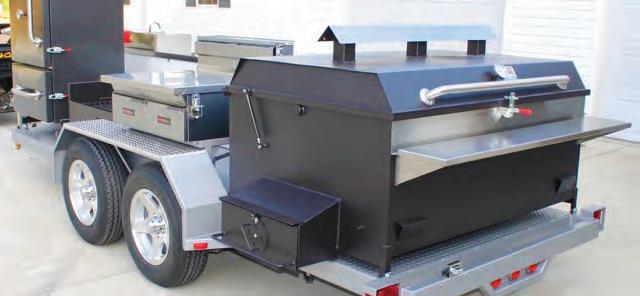





















































Embarking on the open water is an exhilarating experience, flled with the promise of adventure and relaxation. Whether you’re a seasoned sailor or a weekend cruiser, safeguarding your vessel with proper insurance is not just a choice—it’s a necessity. Explore the reasons why every boat owner should prioritize boat insurance for a worry-free voyage.
The open water can be unpredictable, with unexpected storms, collisions, or other potential accidents. Boat insurance can give you fnancial protection if there is damage to your vessel, providing coverage for repairs or replacement.
Accidents on the water can result in damage to other boats, docks, or even injuries to passengers. Boat insurance offers liability coverage, which can pay for damages or injuries you’re liable for while boating, up to specifed limits, and lawsuit costs if you’re sued. This includes damage you cause to another watercraft or if someone on or near your boat is injured and you’re found to be legally responsible.
Unfortunately, boat theft and vandalism are realities that boat owners face. Boat insurance has comprehensive and collision coverage that can protect you against events outside of your control, including theft and vandalism.
Accidents on the water may lead to injuries for you or your passengers. Boat insurance offers a range of optional medical payments coverage limits, helping to cover medical expenses if you are in an accident or someone is hurt on your boat, regardless of fault.
If you fnanced the purchase of your boat, most lenders require insurance coverage to protect their investment. Having boat insurance not only fulflls these requirements but also gives you peace of mind knowing that your fnancial interests are safeguarded.


Some water municipalities and marinas may require proof of insurance for docking or accessing certain areas. Boat insurance allows you the fexibility to explore different destinations without worrying about entry restrictions.
Emergency towing and assistance
Progressive boat insurance can include optional Sign & Glide® On-Water Towing coverage. If your boat is disabled or breaks down on the water, Sign & Glide® pays for on-water towing, jump starts, soft un-groundings, and fuel delivery.
Wreckage removal
If your boat sinks, Progressive boat insurance will cover the cost of removing your boat from the water (if removal is legally required).
Investing in boat insurance is not just about protecting a valuable asset; it’s about safeguarding the memories, experiences, and joy that come with your on-water adventures. Don’t let unforeseen circumstances disrupt your journey—navigate with confdence, knowing that Progressive boat insurance has you covered. Ensure a smooth and worry-free voyage, because when it comes to your boat, peace of mind is the ultimate luxury.
Scan to get a quote in as little as 4 minutes
learn more.




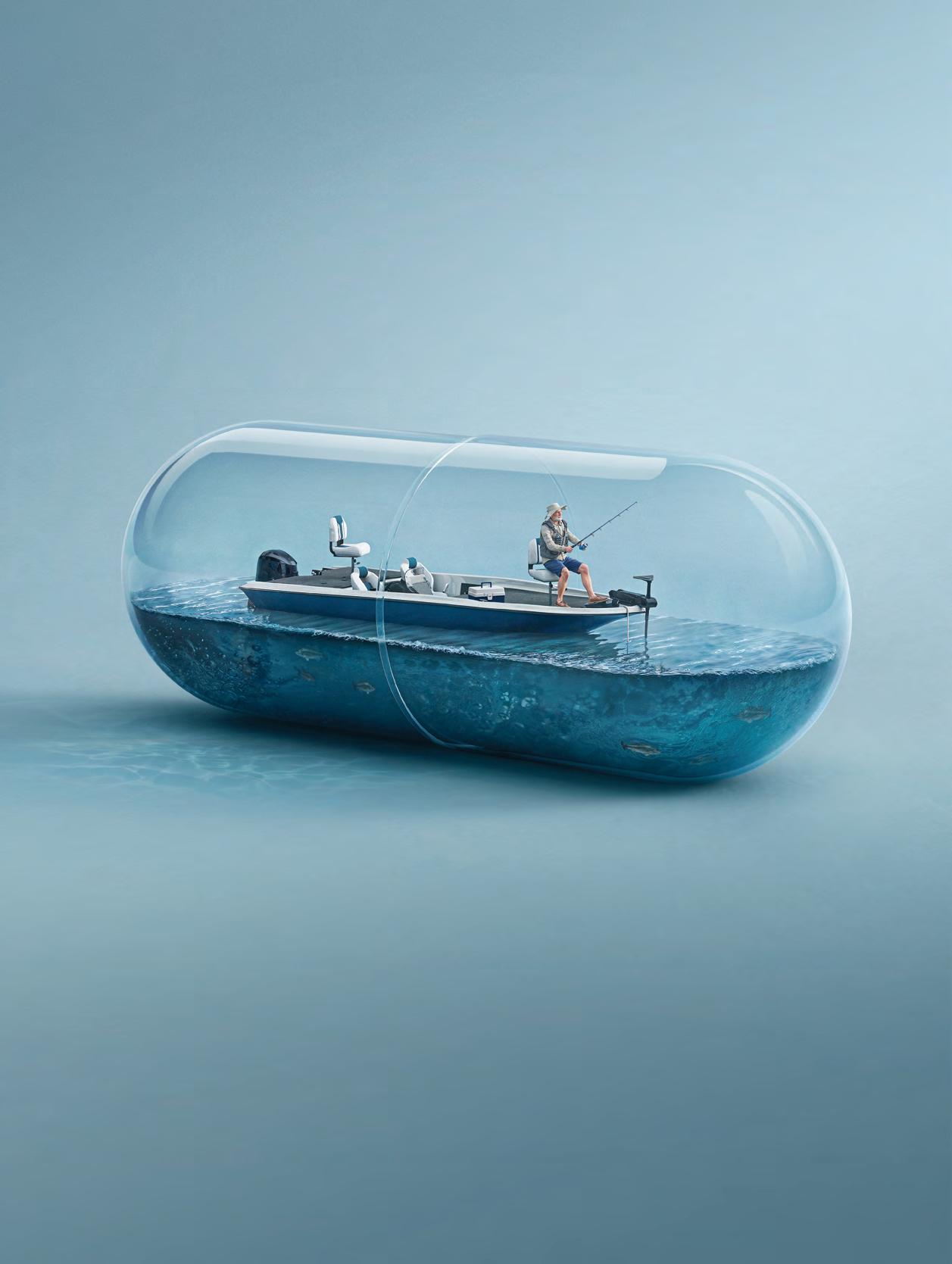


















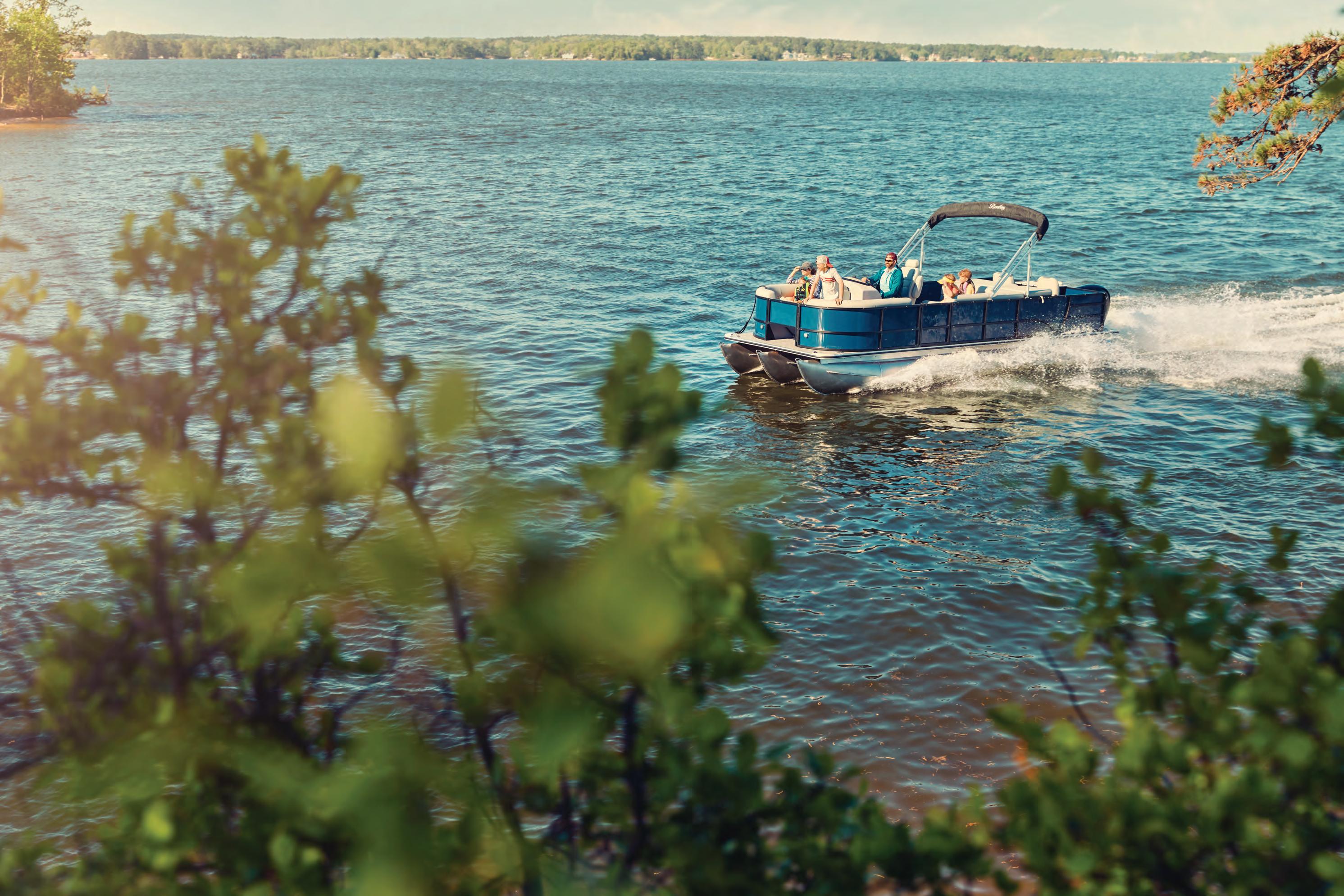


The rewards of a catch made while sight fshing go well beyond the satisfaction of landing the fsh. Take every opportunity to observe fsh in their natural habitat. To maximize success, an angler should take in as much information while on the water as possible.
By Capt. John Luck
Regardless of your target species, tackle of choice, or home waters, actually seeing the fsh is not only highly enjoyable but one of the best learning experiences an angler can have. It leads to a detailed understanding of fsh behavior.
Te sight fshing angler gets to see fsh react to everything around them, from the lure, bait, or fy presented to them, to the actual structure of the waterbody they live in. Recognizing their cues of interest or disinterest becomes applicable for species in both fresh and saltwater. Obviously remaining as quiet as possible, making sure that you have a good vantage point and during daylight hours having a good pair of sunglasses are all vital to your success. My personal favorite is the Bajio Tech Angler Collection due to their ultra clear polarized lens.
Sight fshing enables an angler to have more control over the outcome and allows you to adjust your bait and techniques to ensure a strike.
Sight fshing isn’t just about catching fsh; it’s about understanding their behavior, engaging with the process, and enjoying the thrill of spotting your target underwater. So next time you’re out on the water, keep your eyes peeled—you might just discover a whole new dimension to your angling.
I hope you fnd this article informative! If you have any other requests or questions, feel free to ask. Tight lines.
Contact Capt. John Luck at luckydogman@msn.com.




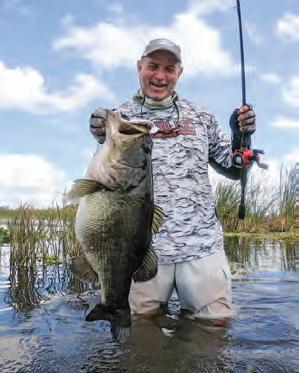

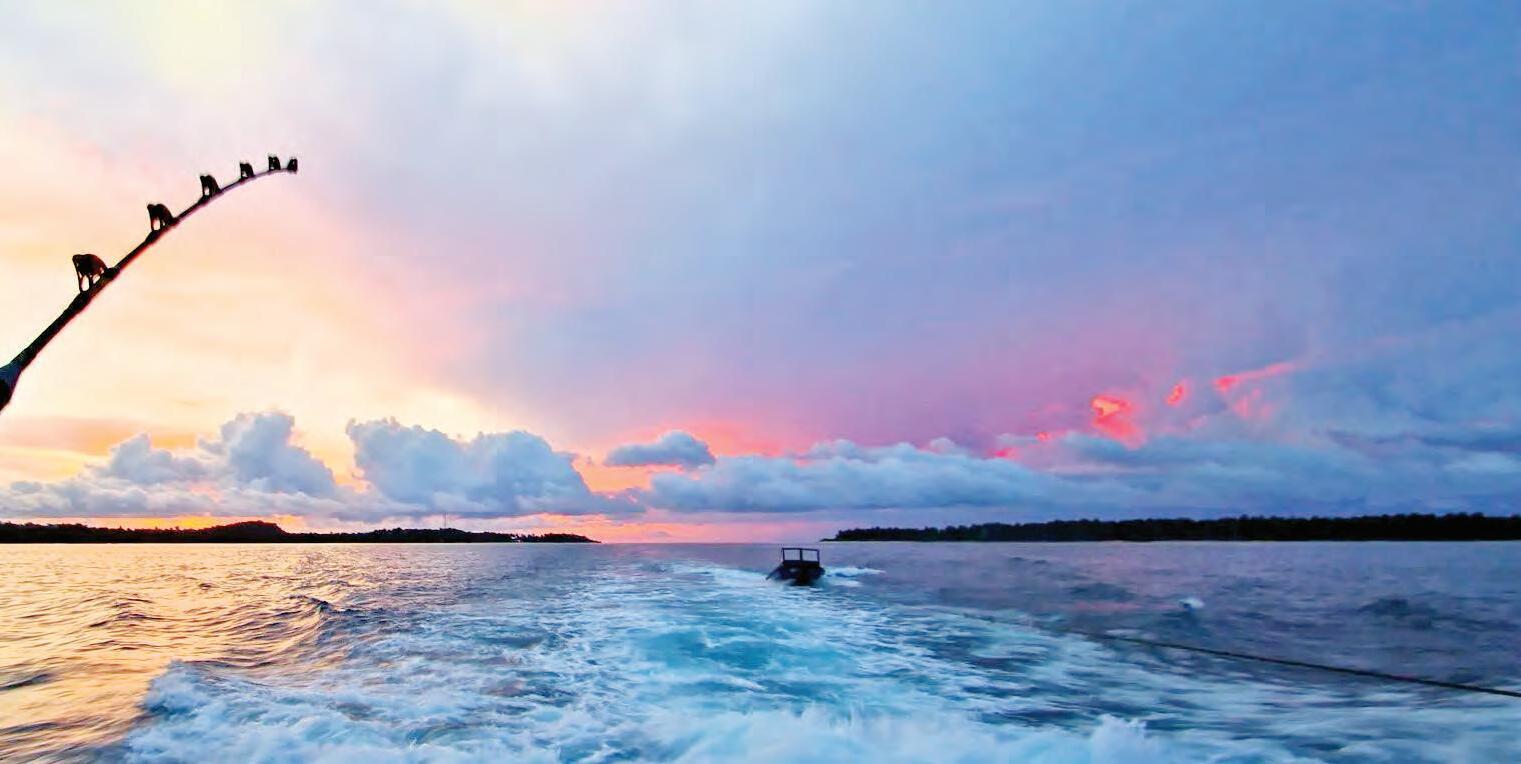


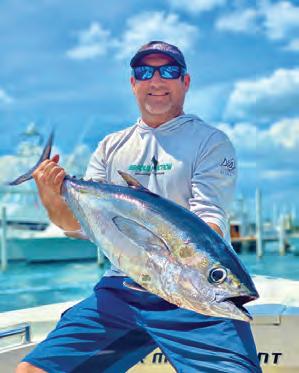

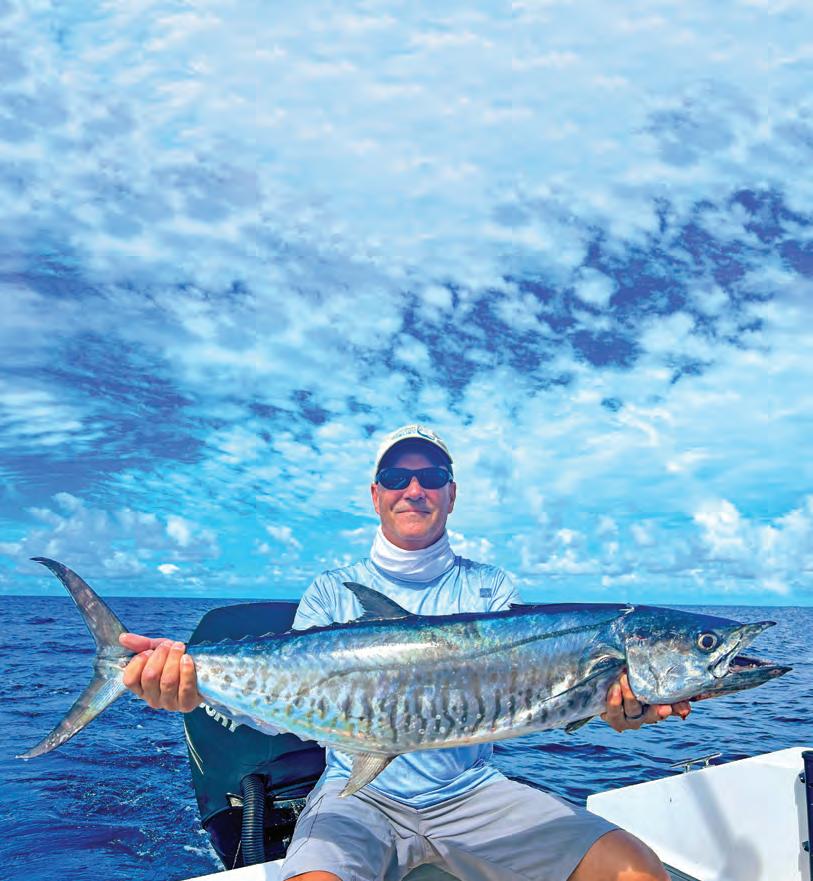
It seems the farther south you go, the tougher the fsh get. Tis holds true in the South Pacifc. If you’re looking to go head-to-head and toe-to-fn with some of the toughest fsh out there, Fiji is a great bet.
Tese fsh are aggressive, fast and strong, and with a fortress built of line-cutting sharp edges, the fsh start with the advantage. Tis is a great place to target giant trevally (GT). Although it is still far away, Fiji is a great alternative to the Seychelles, and it is a destination that ofers amenities for anglers as well as their non-fshing companions. I fshed out of Savusavu, a large remote island that requires an additional hour-long fight on a small plane from the international airport on the main Island. Te remoteness means less fshing pressure, but the island still ofers luxury accommodations. As fshy as Fiji is, it doesn’t get much fshing tourism. It’s a diving and resort destination that happens to ofer amazing fshing. Summers feature a great yellowfn tuna and GT bite, and winters hold marlin and wahoo. I was there during a transitional phase into winter (seasons are reversed there), and there were plenty of resident fsh to target including GT, which is what I was afer. Immersion Fiji is the most experienced guide on the island, and Michael can handle anything from topwater for GT to massive yellowfn and even spearfshing or a cool waterfall getaway.
Te GTs are unquestionably an apex predator and the top quarry. Tese are very aggressive, strong and smart fsh that you need to be battle ready for. My weapon consisted of heavy spinning gear with 100-lb. braid, 150-lb. leader and 350-lb. terminal tackle. When a GT explodes on a 7-inch popper, there is no question that it’s game on. It’s like a bowling ball being dropped from a third-foor window, followed by hooking your line to a semi truck. With drags set at 20 pounds, the fght is as much on the fsh as it is on you. Any less drag would result in countless breakofs in the reef. Te fght will tax your strength, and be prepared for some heartbreaks. Tere is no doubt that topwater fshing for these guys exceeds the hype.
Another fsh that will blast your popper is a Pacifc Spanish mackerel, also known to the locals as walu. Similar looking to our kingfsh, this is one of Fiji’s most prized table fare. It’s much whiter, fakier meat than our mackerel and is a staple in Fiji’s national dish Kokoda (pronounced ko-con-da), which is a ceviche with fresh coconut cream. Tey ofen blow a plug completely out of the water, and they also hit deep trolling plugs, which makes for a nice break
By Will Schmidt
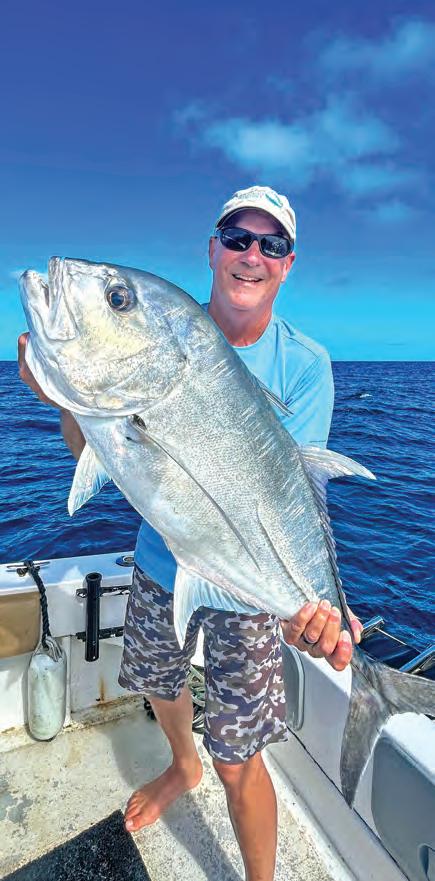
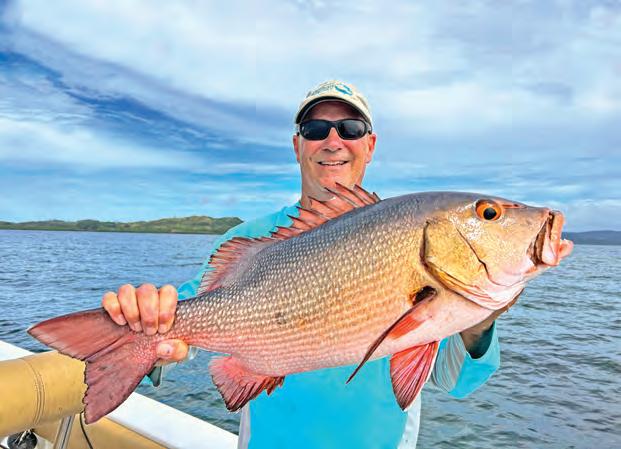
from casting. Long strong runs and crazy aerial attacks make this another great fsh to come across as you search for GTs.
You can also downsize to a foating stick bait for additional topwater action. Smaller, yet aggressive and strong fsh like red bass, bluefn trevally, emperor fsh and other reef dwellers provide plenty of exciting action on the surface.
If giant trevally are on your hit list, Fiji is an amazing destination that fully delivers. Te locals could not be more inviting and friendly, the water is unbelievably clear, and the islands are as peaceful as they are beautiful. It’s truly a trip of a lifetime.
Will Schmidt is a seasoned tournament angler who has been writing about fshing for three decades. For information about fshing Fiji, contact Immersionfji.com.
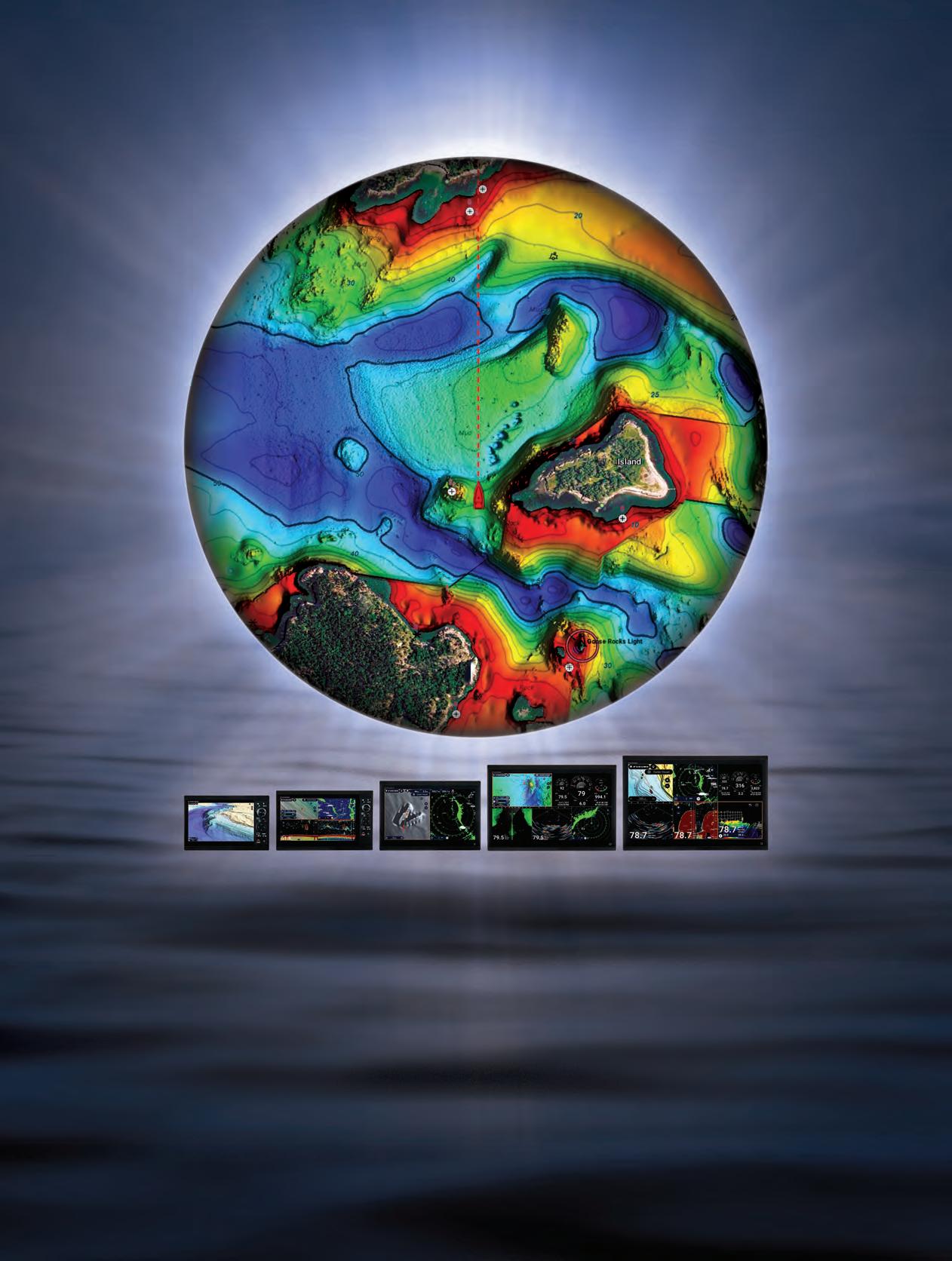


You want new charts?
You got new charts! Explore the ocean with vibrant terrain & depth shading, using all-new TZ MAPS. Don’t just take our word for it. See for yourself. Scan here, and we’ll show you!
THATCH MAGUIRE, EDITOR AT LARGE
Snook are a great inshore/near shore species to target. Teir predator style bite and their world class fght make them truly worthy of the gamefsh title, but catching a snook or targeting snook can be challenging. While there are countless fsheries that hold snook, narrowing down the best area is not an easy call. Given that snook season opens on Florida’s east coast September 1st here are a few tips that will pay of in planning a successful snook fshing trip; one that nearly ensures your success.
First and foremost, where are you most likely to catch snook? Tat’s not a trick question. It’s the frst question you should answer before planning your snook fshing expedition. My snook fshing eforts have led me to believe that the Jupiter Inlet on Florida’s East Coast is the most reliable estuary for easily accessible snook for beginners. My catch ratio over the many years that I have fshed the Jupiter Fla. Inlet suggests that the primary species in and around this pristine inlet is snook. Day in day out, if you catch a fsh in the Jupiter Inlet it will more than likely be a snook.
Te next important question for a successful trip is what to use as a bait or lure? For the most predictable success I strongly recommend live bait. Te bigger the better. Pilchards are my number one live bait, but croakers and pinfsh work well too. Keeping your live bait lively

and healthy is a chapter in itself. Changing your water regularly and adding aeration are key essentials to prolonging your bait’s life. Tere’s nothing worse than getting on top of the bite and discovering your bait is dead. We’ve all done it, but don’t let it happen to you.
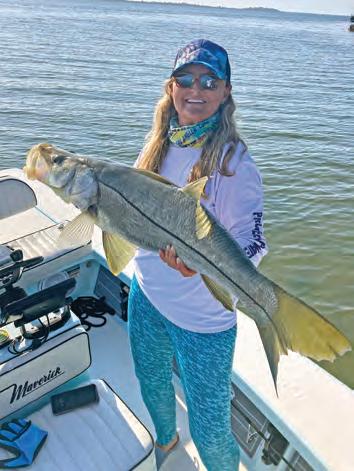
Next on the check list is tackle. You’ll want to scrap the light tackle approach for Jupiter Inlet snook. Medium to heavy or you’ll invariably lose the big ones. I recommend a 20-pound braid with at least a 40-pound leader. Circle hooks are a good consideration if you’re experienced in using them. Nothing less than a #4. You better have a heavy-duty landing net too because some of these monsters just won’t ft into some of the more modest nets. Te next important question is the easiest to answer. Where in the Jupiter Inlet do I fsh for snook with predictable results? Answer- just about anywhere! Obviously, docks are a great hiding place for snook, and night fshing will normally produce the best results around docks with lights or shadow lines. Flip a big pilchard under a dock light in Jupiter Inlet and watch what happens. You’re about to be tested because you’ve got to horse them away from the pilings or you’ll be kicking yourself for days. Tis is where the braid comes in handy. It’ll allow you to win that battle more ofen than not. But everybody loses that battle from time to time. Seawalls are also a good source for targeting snook. Tey’re cruising the seawalls constantly so just be patient and let your live bait do all the work.
You can use live shrimp if that’s all you can get, but your species catch will not be predominantly snook. You’ll catch a fair amount of junk fsh in Jupiter with live shrimp. I personally don’t want to confuse the efort with all that inferior action, and you don’t have to travel to Jupiter for that catch.

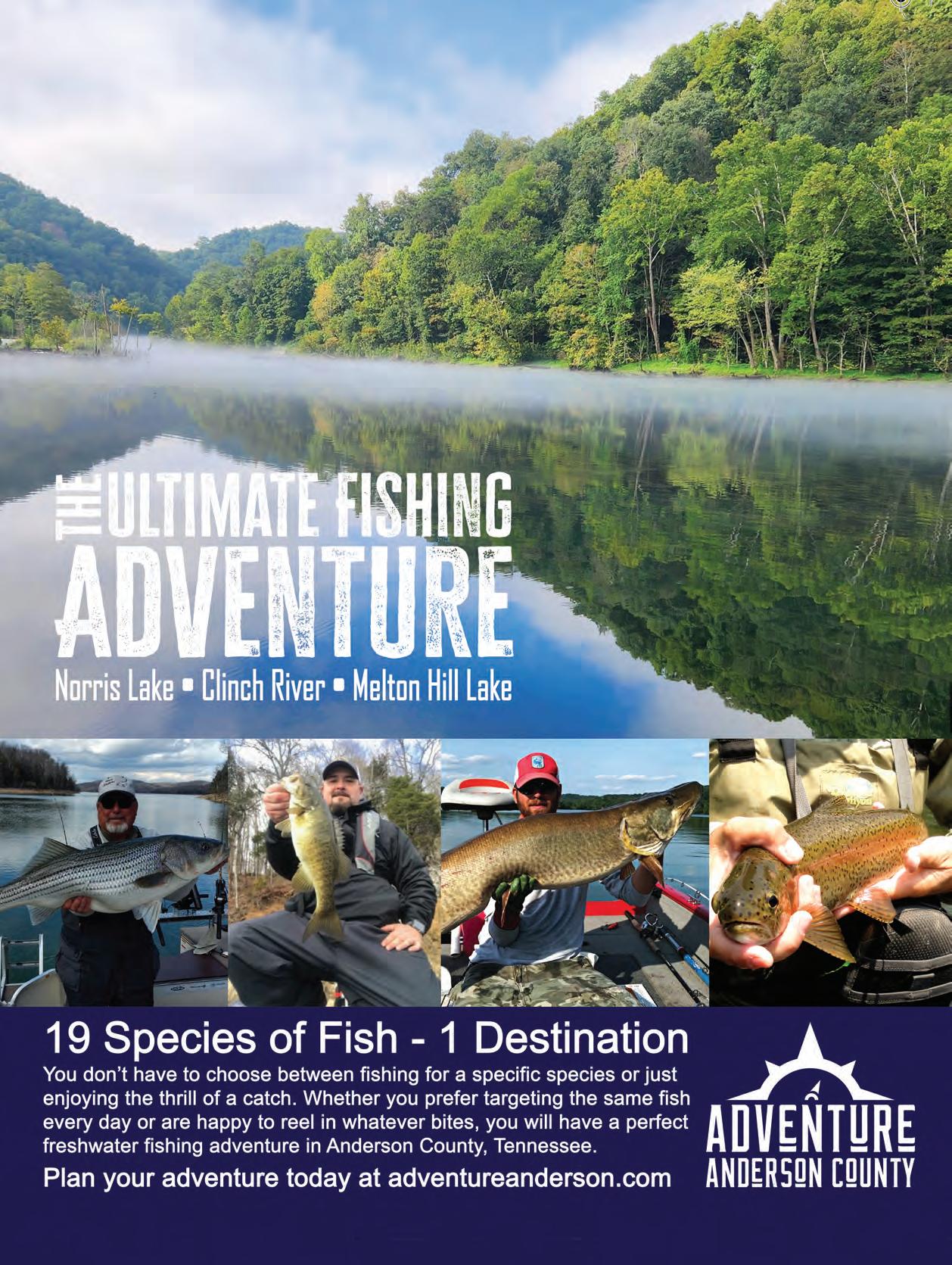
by Capt. Richard Simms
Chattanooga – a river runs through it.
Yes, the Tennessee River slices the city of Chattanooga - also known as the “Scenic City - in half. With TVA’s Chickamauga Dam within the city limits, portions of Chickamauga and Nickajack Reservoirs are within a long cast of Downtown Chattanooga – offering a combination of lake fishing upstream from the dam and riverine conditions downstream.
The varied ecosystem means that almost every warmwater fish species found in the Tennessee River can be caught alongside the popular Tennessee Aquarium or even in the shadow of historic Lookout Mountain. Let’s hit the fishing highlights.
Chickamauga Lake has evolved full circle in the last 40 years. Aquatic vegetation grew in large quantities in the 1970’s creating a reservoir jampacked with largemouth. Most were small – 5 lbs. or less – but they were plentiful. In the early 90’s, however. a mysterious die-off wiped out the vegetation, resulting in a crash in the largemouth population.
In the year 2000, the Tennessee Wildlife Resources Agency (TWRA) began an experimental stocking program, adding Florida-strain largemouth bass fingerlings annually to Chickamauga. It took ten years to see results – but those results were incredible. The numbers of doubledigit bass have been shocking. The most rigorous and fast-growing are the hybrids between the Florida bass and the native, northern largemouth. One of those fish ultimately grew to be a new Tennessee State Record

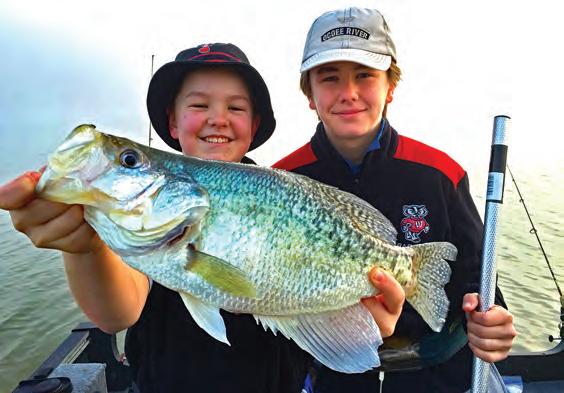
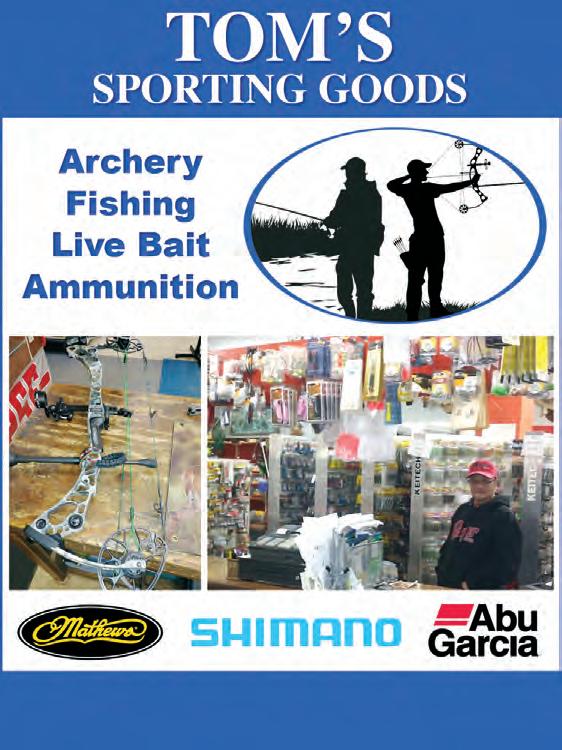
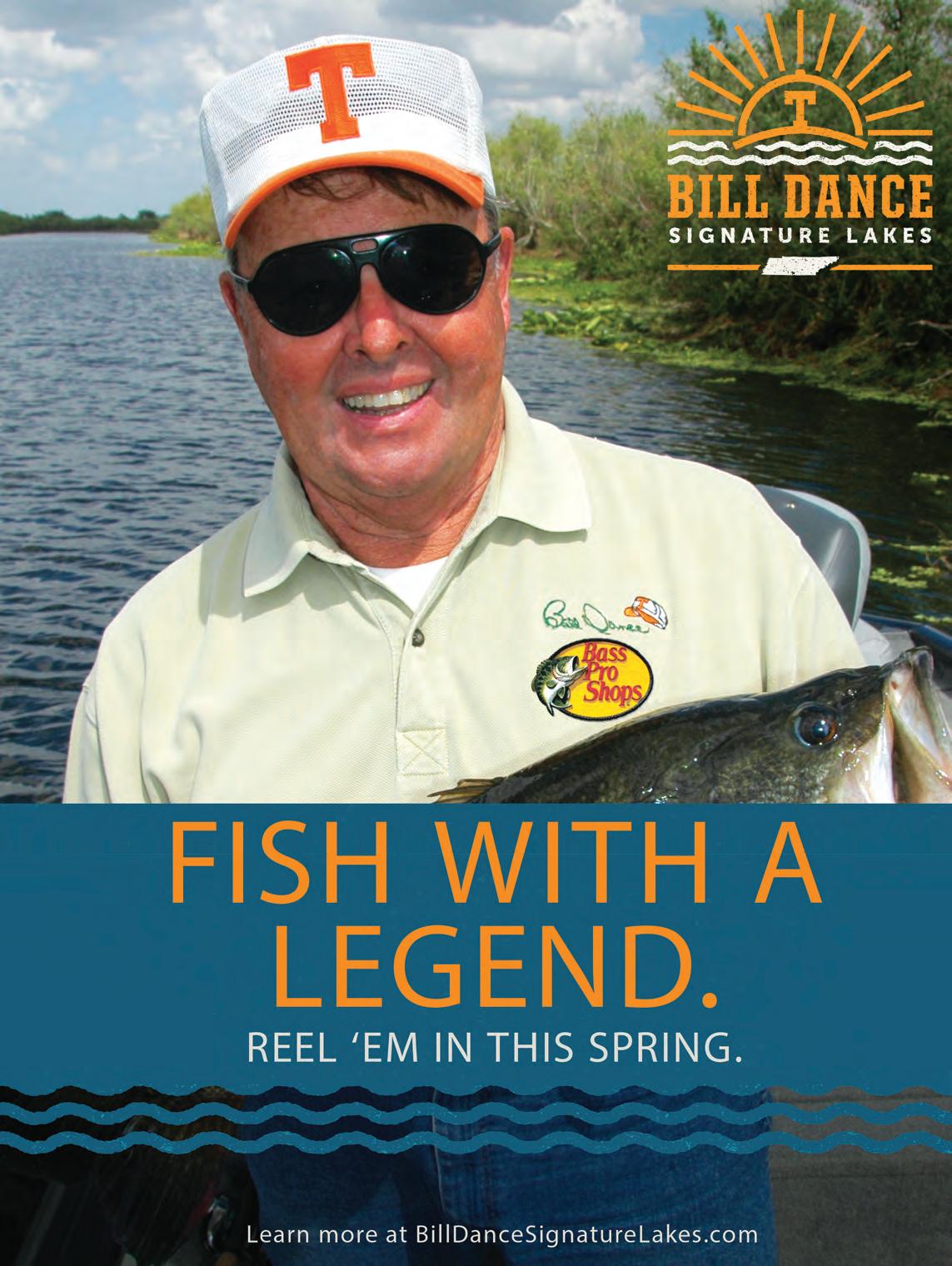
SCENIC CITY FISHING continued from page 2
Largemouth, 15.3 lbs. caught by Gabe Keen in February 2015.
In recent years Chickamauga has consistently been ranked among the country’s top largemouth lakes. There are numerous professional anglers who have moved here, making Chickamauga their “home lake.” That list is currently topped by Jacob Wheeler, 3-time MLF “Angler of the Year.” There has also been a proliferation of professional bass fishing guides who now call Chickamauga Lake their home.
Nine years ago, the Florida-bass stocking program was expanded to several other Tennessee lakes, although it is still too soon to tell if those results will mirror the great fishing in Chickamauga.
In spite of the number of restaurants that serve them, there was a time when anglers considered catfish a “trash fish.” Those days are done.
Anglers discovered that the Tennessee River is a virtual “catfish factory,” routinely churning out huge blue cats in the 50-pound class and above. The numerous bridge abutments in downtown Chattanooga are just one of many places you might see anglers searching for trophy blues along with tasty channel catfish and occasional flatheads.
Chickamauga Lake has gained worldwide fame for its great bass fishing; however, the awesome crappie fishing remains a somewhat well-kept secret. The lake offers white crappie and black crappie in outstanding numbers. Of course, late winter and spring is when most people concentrate on crappie. However, with a wide variety of shallow and deep-water habitat, those who know how can put slabs in the boat year-round.
Shooting docks and trolling crankbaits are the “go-to” summer patterns. But throughout the year you will see anglers using virtually any crappie fishing technique that exists. Personally, I love long-line trolling jigs beginning in late February through late April.
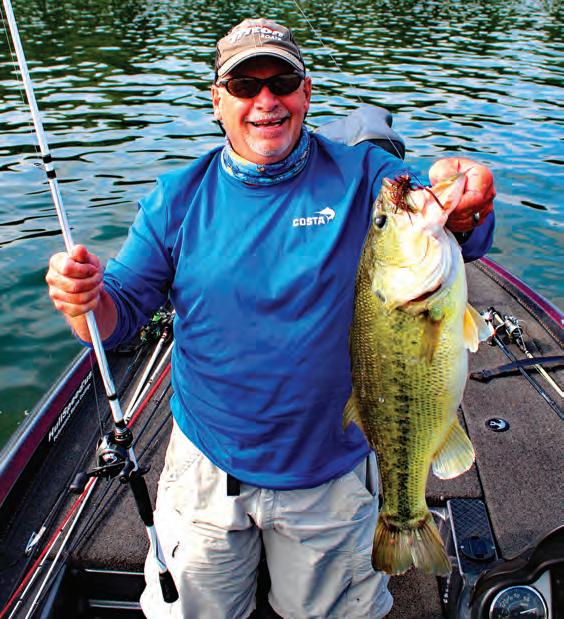
see

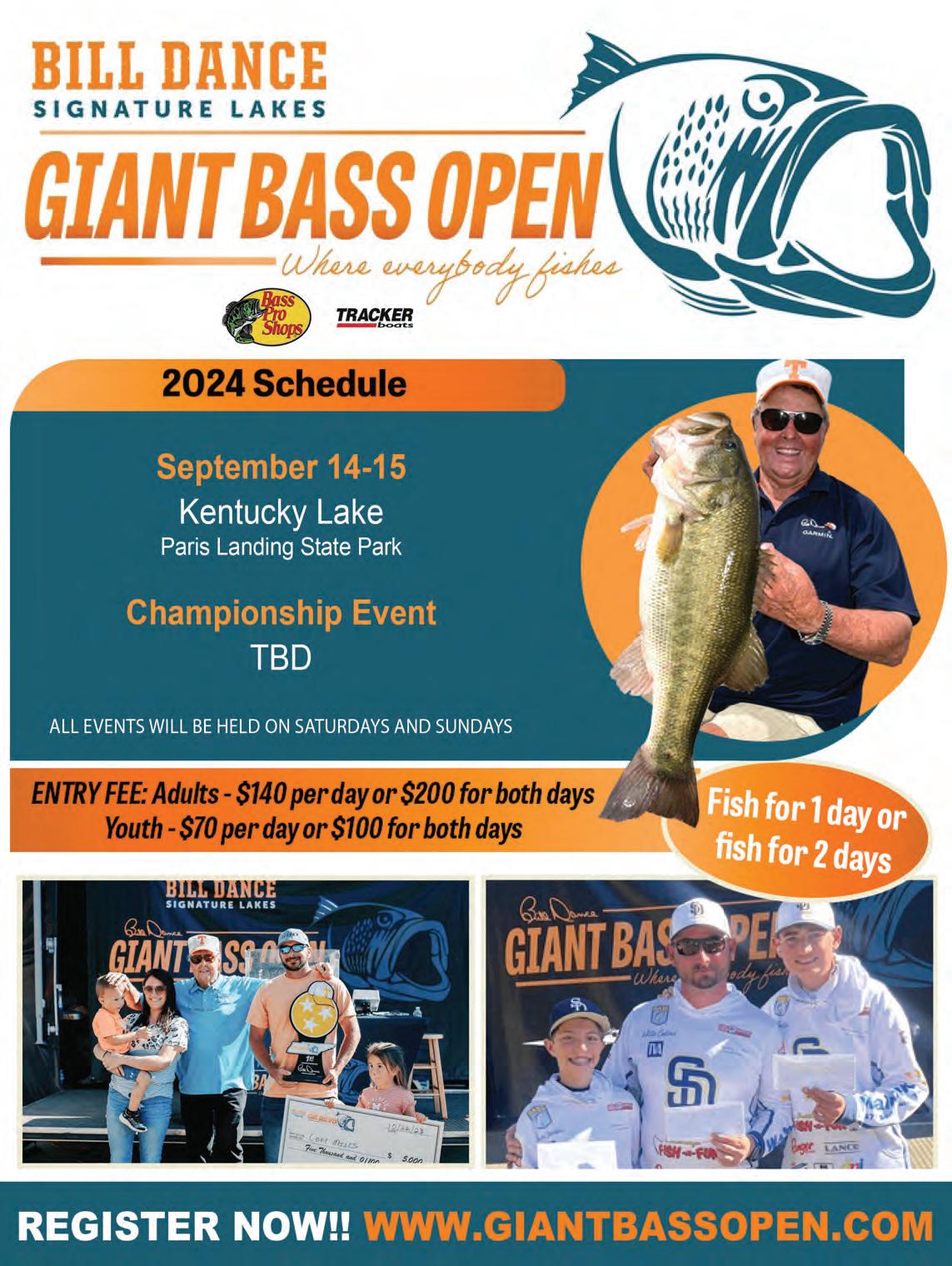
Greetings to my readers! I hope that the world finds you and your family doing well!
STRIPER FUN GUIDE SERVICE ON THE CUMBERLAND RIVER
Captain Jim’s StriperFun Guide Service Cumberland River Adventures fishes in the Cumberland River because the Stripers are much larger in the Cumberland River system than other freshwater areas. CLIENTS HAVE COME TO SEE US FROM LITERALLY ALL OVER THE WORLD. Over 15 stripers are caught annually in excess of 50 pounds and 40-pound fish are not uncommon. The smallest fish (we generally catch daily) is over 3 feet long! These fish mostly eat high protein rainbow trout, large gizzard shad and skipjack and also fight the current all day, making them much heavier and stronger than “lake” fish. This fishing is not for the faint of heart however! These big fish hit like freight trains, making long powerful runs in the constantly flowing waters of the river! We use large rods, heavy duty reels, 50-pound test line and titanium hooks!
When a big river striper comes after a large bait, the bait will be tail dancing all over the surface trying to get a way. Sometimes the “dance” will last half a minute (as you watch the big predator circling the prey!) until the striper finally gets the big bait then its “kabam”!! The rod gets yanked down and the reel is screaming! We also catch huge fish casting Captain Jim Special (see our website store) Striper Magic “glide” baits! We fish all year, but late summer and fall are great months to fish! STRIPER FUN GUIDE SERVICE ON LAKE CUMBERLAND
The late summer striper fishing on Lake Cumberland (southern KY) is terrific, with limits of nice 10-to-15-pound stripes caught on many
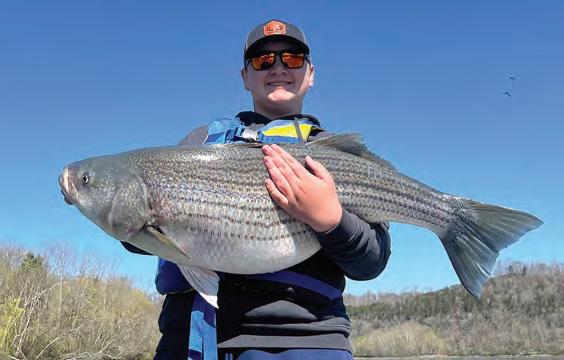
days and the occasional 20 pounder as well! We troll live bait on planer boards 10 to 30 feet deep concentrating on main creek channel points. We also cast Captain Jim “Striper Magic” lures. With multiple full-time guides StriperFun offers day trips on Lake Cumberland year-round (weather permitting).
It is great to be alive and be a “free” American! I look forward to seeing all of you this year on the water. Always remember to stop and shake the hand of a person in uniform or wearing garb that shows they are a veteran! Their service is why you speak English, can vote and can enjoy the freedoms you do!
Until next time, blue skies and tight lines!
With full State licensing and insurance, all Captain Jim’s Guide Service guides (19 guides on 18 waterways fishing 9 different species of fish) can take you on a safe, fun and unforgettable fishing adventure! Check out all of our fishing services as well as our exclusive “online” store at www.striperfun.com or call 931-403-2501 to make reservations today.


By Perry Hensley
irst let me state that I am still learning and although I have fished for crappie most of my life, I have been trying to dig in to where, and now why, crappie do what they do .
Let’s start with the word stratification. This can be summed up basically like this:
There are 3 stages of depth in a lake.
First there is what is known as the epilimnion Layer – This layer will be found in the upper or shallower layer of the lake which has the most oxygen content, believed to be caused by the growth of vegetation in and around the lake.
Second we have what is known as the metalimnion Layer, and this layer while not having as much oxygen, it does however have adequate levels to hold crappie. As a bonus, this layer also has the most drastic temperature change of any other layer that will be described here. Needless to say this is my favorite layer.
Finally, the third layer known as the hypolimnion has the least oxygen content and is much cooler than any other layer and doesn’t hold many fish if any due to those conditions.
Here is the kicker though...as confusing as it can be to some anglers, you can find the thermocline on your depth finder/sonar unit, if you will notice that most aquatic life will be showing up starting at a certain depth band. For instance, looking at your down imaging, with your sensitivity set higher than normal, you will see a cloudy layer with most of the fish being in that cloudy range. This is the thermocline.
With fall and winter arriving, along with those cooler water temps your lake may go through what is called the turnover. The turnover simply

is when oxygen levels in the lake will flip flop, or the thermocline will disappear or become a much deeper or larger layer in the water column. In some cases the oxygen will even out from the top to the bottom, putting the fish in a wider depth band as mentioned above.

In closing, I recommend that you research all the characteristics and patterns of the fish you target in your own lakes. Do some homework to maximize your angling abilities. As always, I encourage everyone to get out there and make those memories with that friend or loved one and enjoy all that the creator has given us. God Bless and Tight lines, Perry Hensley Sr.
from page 4
I bet many people reading this will be shocked to see walleye on this list. Some may even question it. If so, they have probably never fished the headwaters of Chickamauga Lake (the tailwaters downstream from Watts Bar Dam, about 50 miles north of Chattanooga). While usually considered a “northern” fish, walleye are actually native to Tennessee in select locations. In fact, the world record walleye (25 lbs.) was caught in Tennessee in 1960.
Walleye are first cousins to sauger, which were once plentiful in the Tennessee River. However, sauger went on a mysterious decline. TWRA fisheries biologist Mike Jolley and his peers decided to try stocking walleye to fill the niche left open by sauger. “Walleye live longer than sauger, they get bigger and they are easier to raise in hatcheries,” said Jolley. “We also hope they’ll offer more of a year-round fishing opportunity than sauger overall.”
In 2013 TWRA began stocking walleye fingerlings annually in Chickamauga Lake, downstream of Watts Bar Dam. It didn’t take long to start seeing results, although it took a while for southern anglers to figure out the best techniques for catching this “new-to-us” species. Now, however, the word is out.
Capt. Scott Lillie cut his teeth, as a youngster, trolling for walleye up north. Now Capt. Lillie employs the trolling techniques he learned decades ago to fill live wells with walleye for his clients. His available winter guide trips routinely book up a year in advance.
Those are the kind of reports that make Jolley proud. “It’s everything we hoped it would be and probably more,” said Jolley.
Those are some of the fishing highlights to be found in Southeast Tennessee. Of course we haven’t mentioned smallmouth bass, spotted bass, striped bass (rockfish), white bass, bluegill or shellcrackers. All offer outstanding fishing just out Chattanooga’s backdoor.
For the trout purists, a few local streams are stocked. However just about an hour’s drive to the east, the Hiwassee River provides remote, mountain trout fishing that rivals what you see in the classic movie, A River Runs Through It.
Regardless of what species you prefer to “target,” Chattanooga is the perfect place to take aim.
Capt. Richard Simms is the Editor of CrappieNOW magazine as well as owner of Scenic City Fishing Charters. He is a former game warden for the Tennessee Wildlife Resources Agency before becoming a photographer and PR guy for TWRA. That led to a 30-year career as a broadcast journalist and freelance outdoor writer. You can follow Capt. Simms on Facebook.

By Scott Norton
It has been very hot and the end of summer is near. Here in Western North Carolina we have many lakes with a variety of forage that effect bass in different ways. You can actually target bass that are keyed into certain food. For example, if you fish near bluegill beds chances are you will need to use a bait that looks like bluegill. If you are looking for herring eaters you will need baits that look and act like blueback herring. Being aware and looking for clues will lead you to these feeding hot spots.
Having a graph will help you find certain structural features that will help you focus on areas with active feeding bass. On herring lakes, you will see blow ups where bass will school and corral these shad. If trout are stocked, you will need to know where they will be located in a body of water and use baits that will be the best representation of what you are trying to mimic.
In the mountains, lakes in different elevations will have higher or lower temperatures. The higher lakes will have lower temperatures, while lakes in lower elevations will have higher temperatures. This effects the patterns of all fish, including the time the seasonal transitions change as well. The speed at which you have to retrieve a lure can be effected with temperatures. Once you get in the upper 80’s things start to slow down and going to the plastics with subtle action becomes the main bait.
Scott Norton is a Western North Carolina native. Born in Asheville, N.C., he is a long-time hunter, angler and weekend warrior.
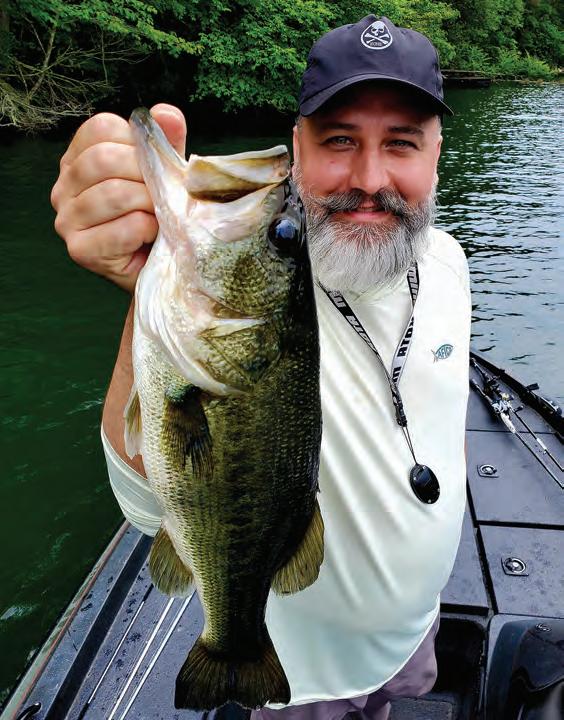


By Capt. James McManus
September is always a welcome end to the summer. Gone are most dog days and a lot of the boat traffic, fish are waking from their summer doldrums and it’s “fixin’ to get good.” There will soon be huge schools of breaking stripers on Hartwell. Spots and smallies will return to the banks, as well as start looking up more often on Fontana. Hoping to make another trip to Lake Michigan as I hear the big king
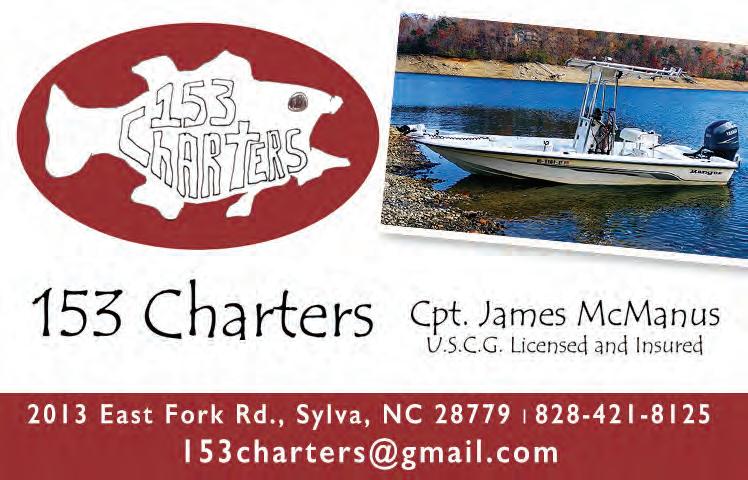
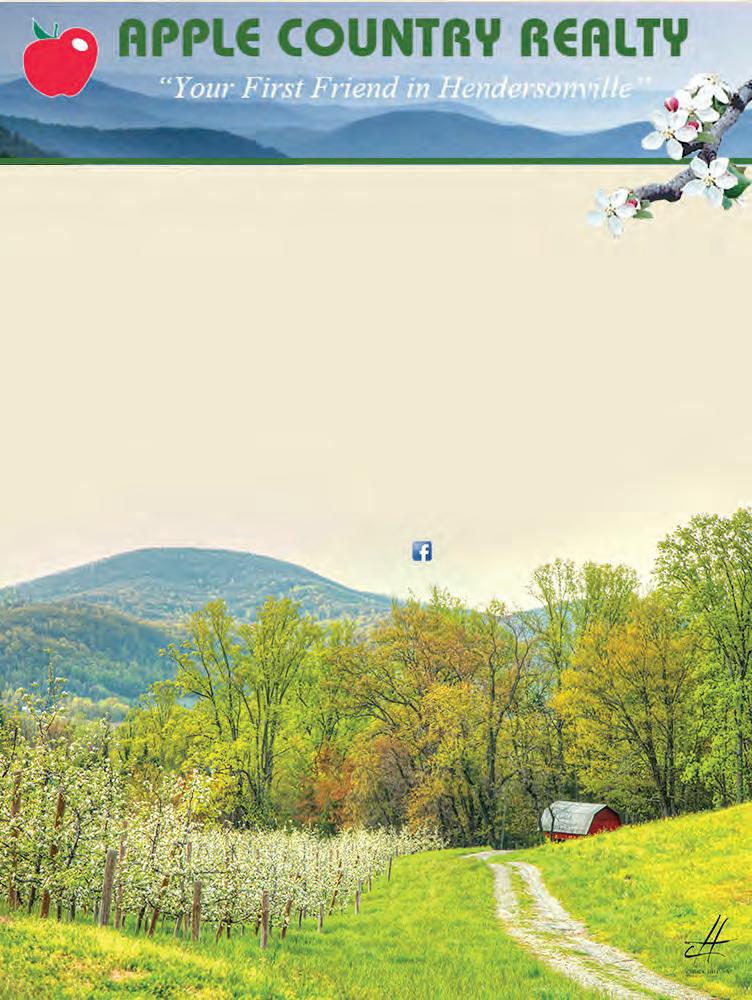
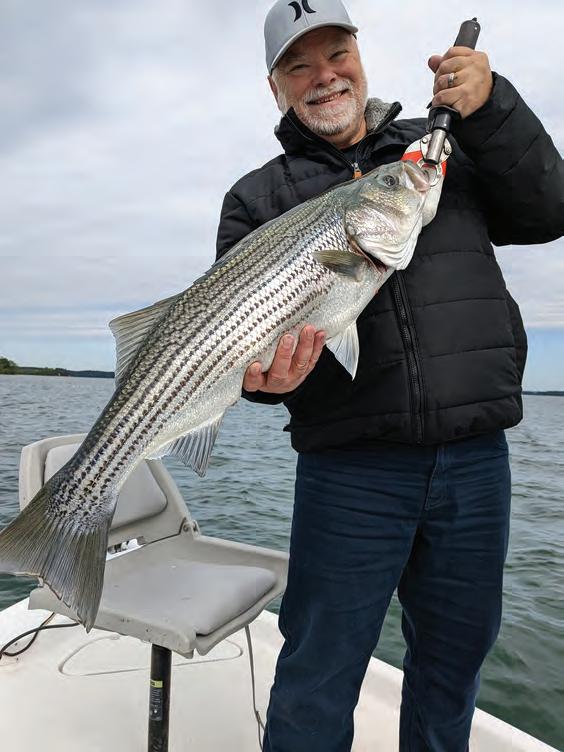
salmon stage in front of major rivers. With cooler weather, everything is more appealing and often more rewarding.
At home though, I have heard rumblings of our wildlife folks preparing to stock stripers in Fontana. Hat’s off to them if it’s true. We have been pushing for that for years. Lots of time on the water lately has shown tons of bait, not just in a few places, but all over the lake. With sonar imaging, it’s easy to distinguish between bluebacks and threadfins, and both populations are strong.
Lessons can be learned from looking at other states stocking methods. Number one is that to have a viable number of catchable fish, you have to stock a goodly number to start with. Most states stock at least 15 per acre annually, and that works best I think with a mix of stripers and hybrids, although Lanier stocks only stripers. Studies have shown at Hartwell that summer survival rates are better with hybrids than pure stripers. With the cooler water temps and deeper areas Fontana should fare well with either. An interesting idea is to also stock some just below the Cullowhee dam, with the removal of the Dillsboro dam they just might have enough free flowing river to spawn and I haven’t talked to a single fly fisherman that objected to hooking into double digit fish, even if striped instead of spotted or colored.
Well here’s to cooler weather, tight lines and give our wildlife folks a thumbs up if you see them.
Later, Capt. James
Capt. James McManus owns 153 Charters. Give him a call for a great day on the water at (828) 421-8125

September in the south is the breaking point from the oppressive heat and humidity of summer. By the third week or so, night time temperatures usually drop down into the fifties and save our wild trout populations one more time. More flexibility in fishing some lower elevation streams is realized and the trout are happy and willing. There are few hatches to be had, so terrestrials still rule for the surface feeders. Cooler temps get the fish looking for a larger mouthful too, so streamers are on the line more often too.
Low water levels are typical in September so finding and sight fishing larger fish can work to your advantage. Pressure from other fisherfolk starts to diminish, too, after Labor Day and the beginning of the archery deer season. Fish loosen up a little bit and are more forgiving on fly selection and less than perfect presentations. It’s just a good time to be on the water.

For us fly fishers, this is the welcomed beginning of the fishing season, with delayed harvest seasons in Georgia, North Carolina, and Tennessee on the way in a month or two. Largemouth and spots are putting on the feed bag and schooling up on shad and blue backs in our area lakes. Wolf packs chasing bait is what makes the world go around for fly fishers and conventional tackle fishers on the reservoirs in the mountains. Be sure to get out at the first sign of those cool north breezes and celebrate the coming of fall by catching a fish or two!
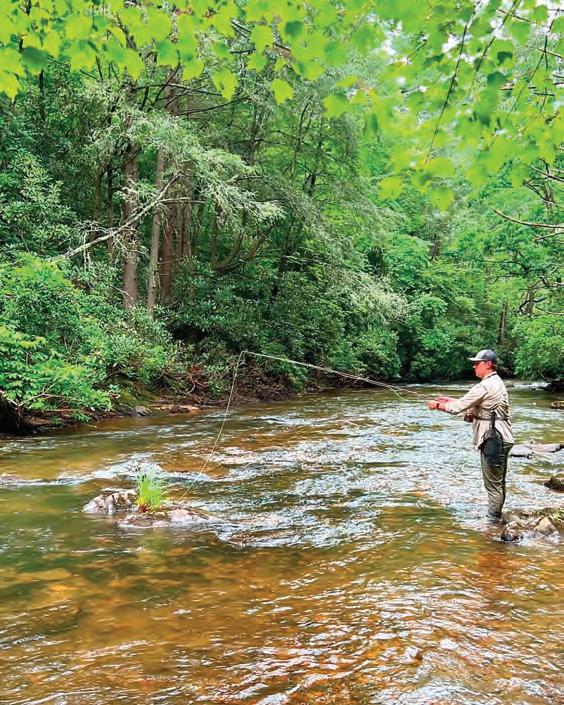


By Ronnie Parris
Hey folks, I hope all is well with you and yours. Loving these cooler mornings and so are the fish. Most of our mountain lakes are fishing great and were catching really nice messes of fish. Key to a good catch now is finding the right combination to fill the live well. First and foremost is to pick the best lake an sometimes it’s gonna depend on timing If it’s a busy weekend day for example I’m not gonna fish a lake that’s gonna be loaded with jet skis and tubers I’m gonna pick one of our less known lakes for some relaxing fishing and not fighting the waked from pleasure boaters. Next I’m gonna figure out where the
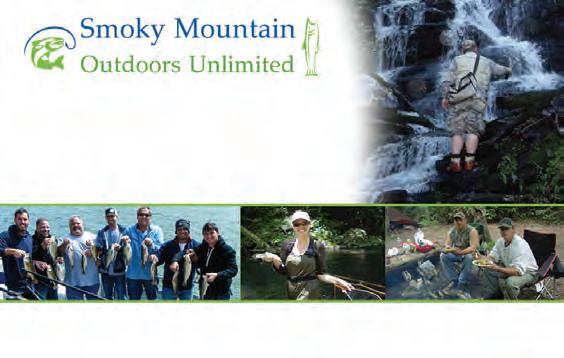
best water temperature is going to be an keep in mind this may be as little as 1or 2 degrees, but it makes a huge difference

Figure out what the fish you’re seeing are feeding on and match that pattern as best as you can, be it live bait or artificial. On the trip with the picture included this is exactly what I did. The first and best thing I did was included my beautiful wife as my fishing partner on this day. We hit the waters at daylight so as to take advantage of the cooler temperatures and less boat traffic. I already knew from a recent trip where these schools were located and within a couple minutes we were both hooked up. Penny struck first with a nice largemouth bass and I followed right behind with




What’s going on guys and gals, Capt. Craig here with AWOL Fishing Charters. I hope that everyone is doing well out there and catching lots of fish. This Summer has been pure torture on us all with the heat and humidity, but we have managed to keep working through it as we countdown the days to fall. I am probably more ready for cooler temperatures than I have ever been in 38 years.


Hurricane season gave us an early visit this year with Tropical Storm Debby that dumped quite a bit of rain on us here on the east coast of North Carolina. The rivers are swollen, some of the lakes are at extremely high levels, and more is coming from what the Weather has been saying but we all know how that is. But guys let’s jump right into what has been going on with all this freshwater, and high water levels.
I got the opportunity to be on The Weather Channel a few days ago for an interview about the Cape Fear River. If you guys missed it I have it posted on my Facebook Page AWOL Fishing Charters. Shoot over to Facebook and check it out. It was very informative, and educational. Be sure to drop a like and follow and comment as well. I would greatly appreciate it.
The fishing in this high water has been very good, as most of my following knows that I love fishing in flooded and high water. I’m actually getting ready to go out right after writing this article, I cannot wait. The catfishing has been on fire on the Cape Fear River as we are being able to fish in locations that are flooded where fish can get in and hide out from the extreme current out in the main river. I pulled into someone’s back yard last week and tied off to a swing set that was flooded and fished this person’s back yard while the homeowner stood on his back porch and spoke with us briefly in amazement that we were fishing in his backyard. It was wild to say the least.
We boated a few smaller catfish before finding another spot at a flooded creek mouth where we caught several decent sized catfish. I have yet to target bass and crappie in these flooded waters but today we are going to give it a try. Most anglers would choose not to fish in these types of conditions which is completely understandable if you do not have the proper vessel, and experience in high water. It can be dangerous. However I do not encourage it, I just choose to do it because I know how good the fishing is and have more experience in high water being that our river is up and down so much. I have had no choice but to learn how to navigate safely and find fish over the past 20 years. The learning never stops that’s for sure.
I’m actually not looking forward to the water levels dropping because these fish are on such a hard feed right now when the water levels get back to normal the bite will fall off for a bit until they readjust. But at the same time I do want water levels to drop because if we have another tropical storm system or hurricane it would just
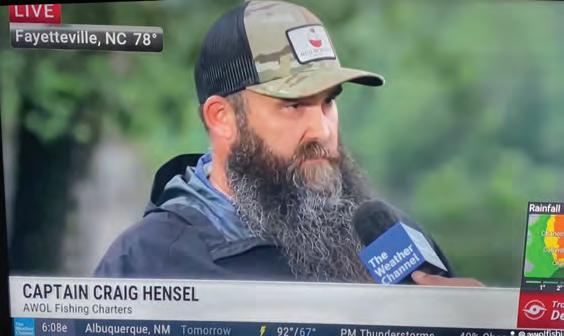
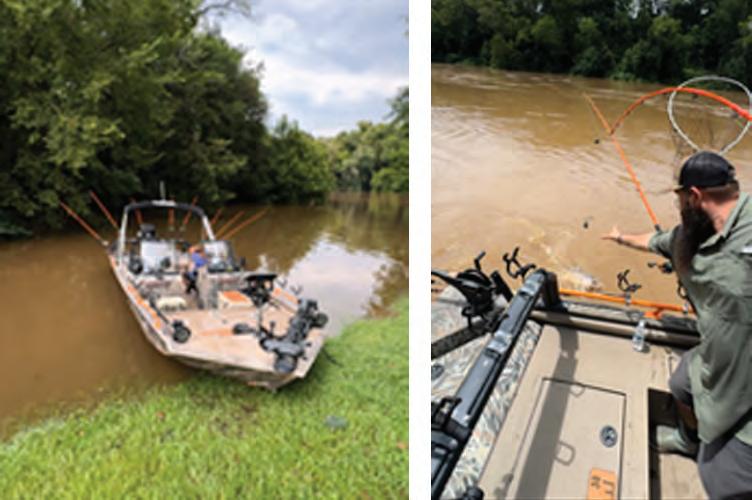
add more water and could cause devastating affect’s and effect’s on our river system just as it did during Hurricanes Mathew and Florence. So we have to take the good with the bad at this time.
But guys, stay tuned for more footage on my social media platforms, Facebook, Tik Tok, and YouTube. I have recently started to repost content on YouTube. So if you haven’t already, please shoot us a Like, Follow, and Subscribe. Be sure to share if you would. I would greatly appreciate it. I look forward to seeing you all on the water. Drop some pictures in the comment sections of where you guys are at and what you’re catching.
Until next time… keep those lines tight, drags set, rods up, and catch a big one. We will see you one the next one!
Capt. Craig
AWOL Fishing Charters Inc. THE BEST COMBINATION continued from page 16
a beautiful yellow perch.
As the morning went, on we continued to boat a good number of perch largemouth red eyed rock bass and 1 nice walleye penny was able to grab. On this trip the water was staying 78.1 in most of the lake, but I had found a section with temperatures ranging around 76 to 77 and it was loaded with good underwater cover and lots of bait fish. The Garmin live scope was priceless on this trip as the small schools were constantly moving and we had to be ready to put our bait’s which were live minnows and wasp nest larvae right in front of the moving schools to capitalize on the bite. The morning bite was fast and enjoyable until about 10am when the first jet ski appeared around the bend followed by a wake boat. That’s when we decided we were ready to head back home.
Arriving at the boat ramp I was confronted by one my pet peeves. At this ramp there was only 2 launches and as we arrived, one had a boat pulling out the other had a flatbed trailer with a canoe occupied. The 2 guys kept that lane closed for at least 25 minutes, lazily walking around, strapping it down while stopping to talk and changing out of their hip waders and checking the back seat. For what I don’t know. Meanwhile, boats trying to launch and load had to wait for the other ramp to open.
Folks please don’t be that person. Get your boat ready while you’re out of the way and quickly launch or load and move out of everyone’s way before strapping it down and stowing equipment for the ride home. Don’t make someone stand baking in the hot sun waiting on you to get out of the way. Common courtesy goes a long way. Well, I’m done ranting— as always, get the kids on the water, be safe and build memories.
Ronnie Parris is owner and head guide of Smoky Mountain Outdoors Unlimited-Fontana Lake Fishing Guides, headquartered in Bryson City, N.C., www.smokymountainoutdoorsunlimited.com; (828) 488-9711.
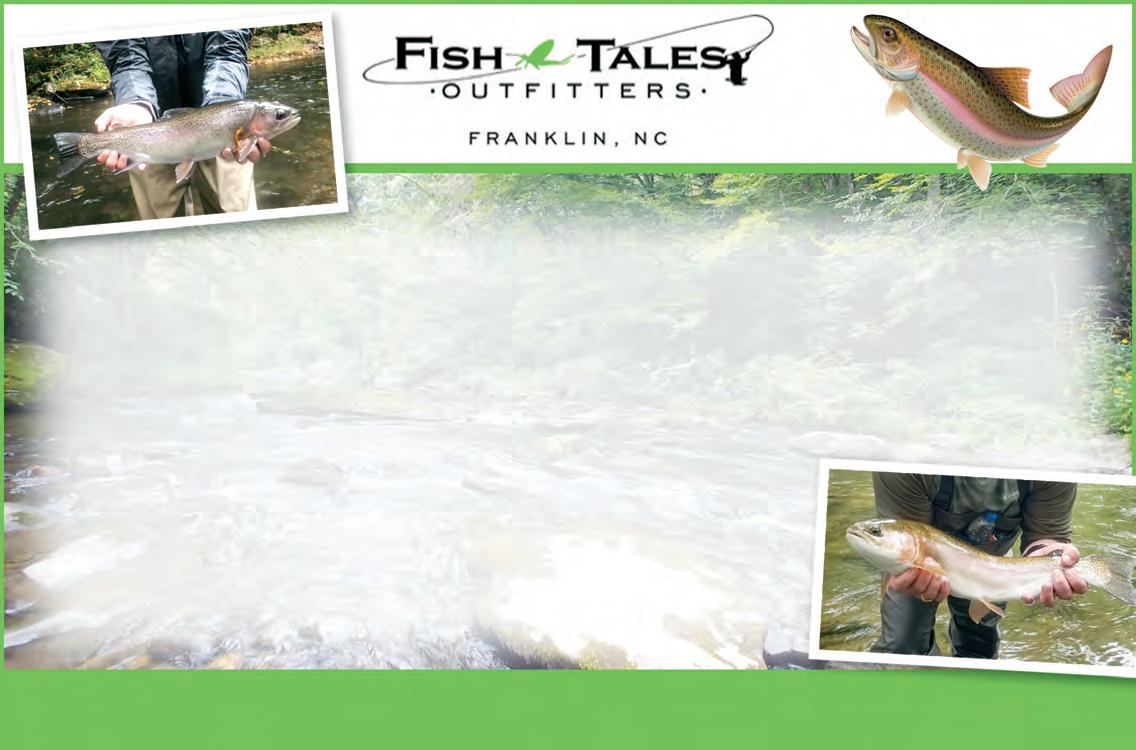
GATLINBURG, Tenn.—Great Smoky Mountains National Park managers are recruiting volunteers for a variety of positions across the park. Opportunities include helping the trail crew rehabilitate two trails, serving as a campground host, and providing information to visitors at Clingman’s Dome.
Trails volunteers are needed every Wednesday at Ramsey Cascades Trail and every Thursday at Little Cataloochee Trail, from 8:30 a.m. to 2:30 p.m. now through September 2024.
Trails volunteers will perform a range of trail maintenance work, like installing drainage features, rehabilitating trail surfaces, constructing raised trail segments, and removing brush. All trails volunteers must be able to hike at least three miles and safely perform strenuous and often difficult manual labor. Volunteers should be comfortable lifting heavy objects and using hand tools like shovels, rakes, axes, and loppers.
The park will supply all safety gear, tools, and equipment needed for the projects. Volunteers will need to wear long pants and sturdy, closetoed footwear and bring a day pack with food, water, rainwear and personal gear for the day. Volunteers must register in advance. Contact Trails and Facilities Volunteer Coordinator Adam Monroe by email (adam_monroe@nps.gov) or phone (828-497-1949) to sign up.
CLINGMAN’S DOME ROVERS:
Clingman’s Dome rovers work closely with the NPS to accomplish the mission of informing and educating the public about Great Smoky Mountains National Park, particularly Clingman’s Dome, also known

Dome VIP providing information to visitors.
as Kuwohi. Rovers will provide visitors with accurate information about the natural and cultural history of the park, recreational and educational opportunities, area attractions, and nearby trails. Rovers will be needed four hours per week.
Email Julie Flores (Julie_flores@nps.gov) for more information.
Campground hosts are needed in campgrounds on the North Carolina side of the park. These opportunities require one to two months of service. A campground host’s primary duty is to assist rangers with operation of the campground and surrounding area in a manner that protects park resources and promotes a safe, enjoyable visitor experience. Campground host volunteers stay in the campground in their own RV or camper. Hosts keep rangers advised on conditions within the campground including vacancy status, problem visitors, illness or injury to visitors, hazardous conditions, weather conditions, wildlife observations, and maintenance and supply needs.
Email Jackie Duhon (jackie_duhon@nps.gov) for more information about how to become a campground host.
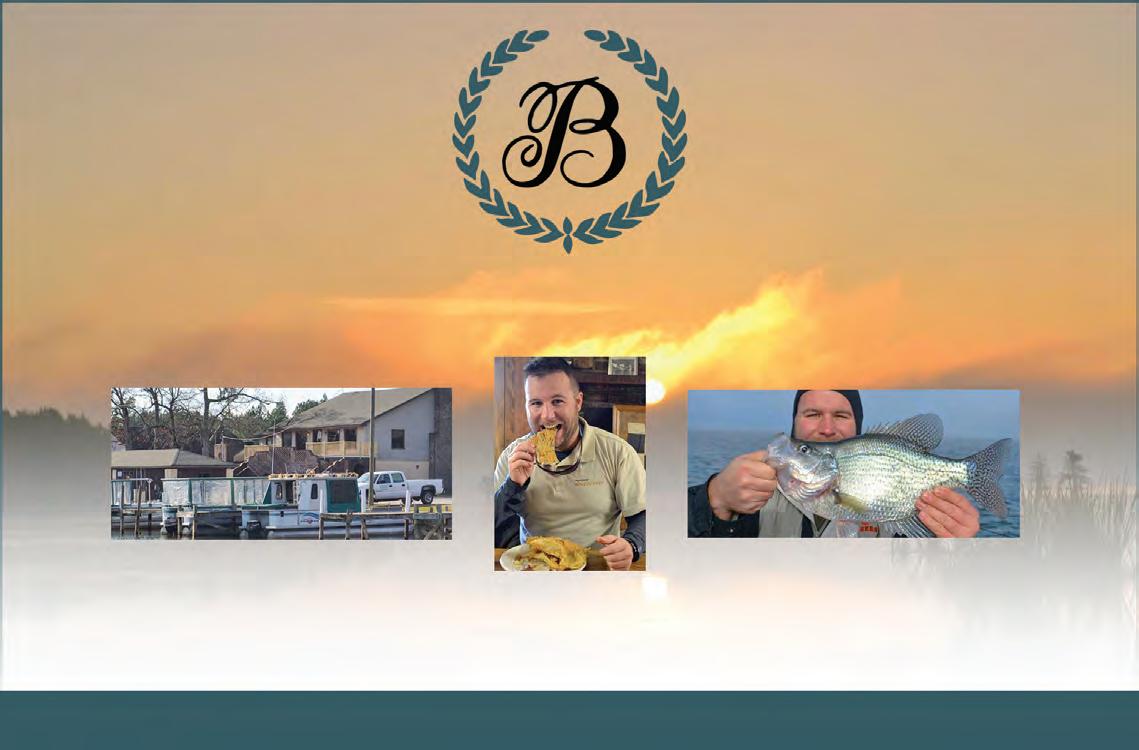

By Capt. Cefus McRae,
Raise your hand if you’ve ever spent the entire day on the water without getting a bite.
Be honest. Now look around the room at other people who are reading this Angler Magazine and see who else has their hand in the air. Probably all of them.
It’s nothing to be ashamed of. Deer hunters spend countless hours in the woods, waiting patiently for a big buck to come along, and often never get to pull the trigger. It’s certainly happened to me. But we still come back for more, and that’s a good thing.
So what can you do on those days when the fish simply don’t want to bite? The obvious answer is, ‘Pack it up and go home’. Before you throw in the towel, there are actually some tricks you can try that can fire up the bite, and here are a few that have helped me put a fish or two in the boat.
Now let me start of by saying some days are just going to be fishless… no matter what you do. But remember, if you’re down to these maneuvers, you really don’t have anything to lose, do you? You can still go home feeling good about the fact that you weren’t stuck in the office all day.
To me, there are three key components to reigniting the bite…location, presentation and bait choice.
The first one… location, is pretty obvious, but you’d be surprised how many people will sit on a spot and continue to flail the water because they ‘know’ there should be fish there. Well maybe there is, but after 152 casts beside the same stump, that fish is probably not going to bite on cast 153. So move. But before you crank the engine, get a game plan. Look at your chartplotter and pick a spot that you feel has a high percentage of being fishy. Creek mouths, structure, river bends, etc. Set your waypoint based on some intelligent thought and then hit the throttle.
The second factor to triggering bites is presentation. Remember, what worked yesterday, may not work today. Consider water clarity when choosing the color of your lures. Clearer water typically calls for lighter colored lures, and dingy, darker water calls for dark colored lures. Again, this isn’t always the case, but it’s a good rule of thumb. Also remember, as you go deeper, light penetration diminishes. It could be a bluebird day, but 50 feet down, it might be quite dark where the fish are at. Speed and action go hand-in-hand. Extremes in temperature can make fish sluggish. Super-hot or super-cold water will slow down fish activity, and you have to do the same with your presentation. When conditions are perfect, you can really ‘work’ a lure and fish will travel great distances to attack a plug or bait.
Finally, in my top three, it’s bait choice. Whether you are fishing in a farm pond or 50 miles offshore you need to determine what the gamefish are eating. Crustaceans? Minnows? Bugs? And then mimic those food sources with your lures. Trout anglers will look under rocks in a stream to see what’s hanging around and then match the hatch. If you know threadfins are thick in the area, tie on something small and shiny. Just because the lure is small, doesn’t mean you can’t catch big fish. Remember, elephants eat peanuts. And, if you have the option to fill your baitwell with frisky, local, live baits…do it.
Some days fishing is easy. You can load the boat in no time. But on those days when fish won’t bite, change up your tactics and it may just change your luck.
Tight lines and calm seas.
Capt. Cefus McRae – Nuts & Bolts of Fishing
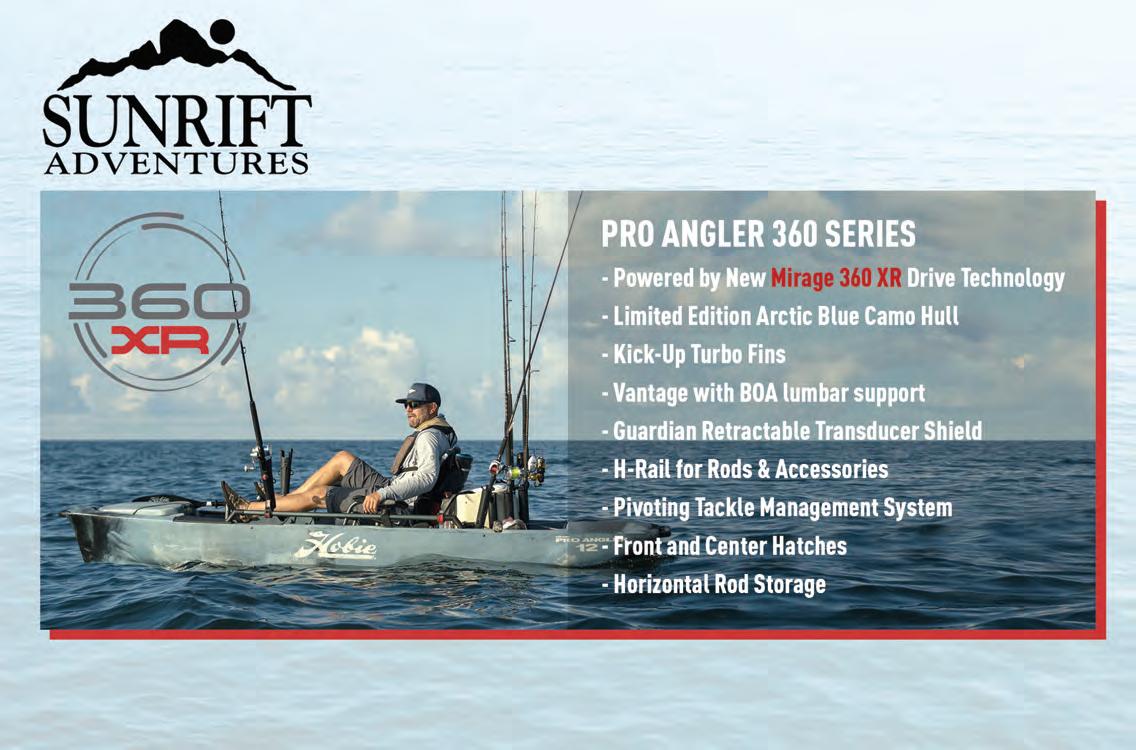


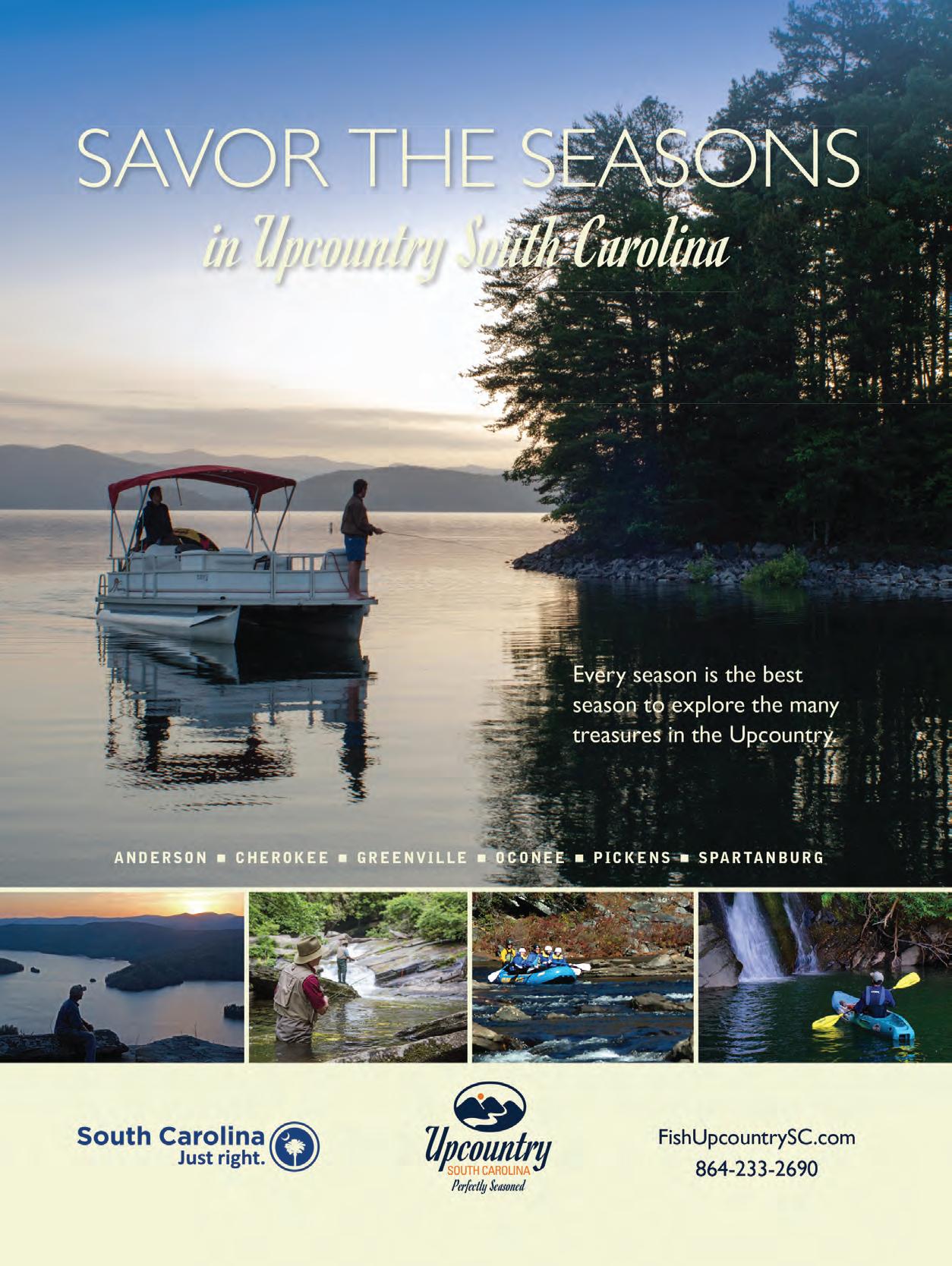




































The most popular soft drink on the planet just made a refreshing splash with these gleaming bars and rounds struck in highly pure 99.9% fine silver, each with an exquisite reverse proof finish! Each one-ounce fine silver bar features an engraving of the famous curved bottle and the popular slogan from the 1970s, “I’D LIKE TO BUY THE WORLD A COKE®”, in big, bold lettering down the side. Each silver round struck in one ounce of fine silver features three Coca-Cola bottles. These tasty treats are officially licensed by Coca-Cola® so you know “It’s the Real Thing!”
Order More and SAVE!
Purchase $99 or more, you’ll receive FREE SHIPPING to your doorstep. When you purchase 10 or more bars or rounds, you’ll also receive a FREE six-gram silver Coca-Cola Bottle Cap Coin, colorized with a reverse proof finish—a $29.95 value!












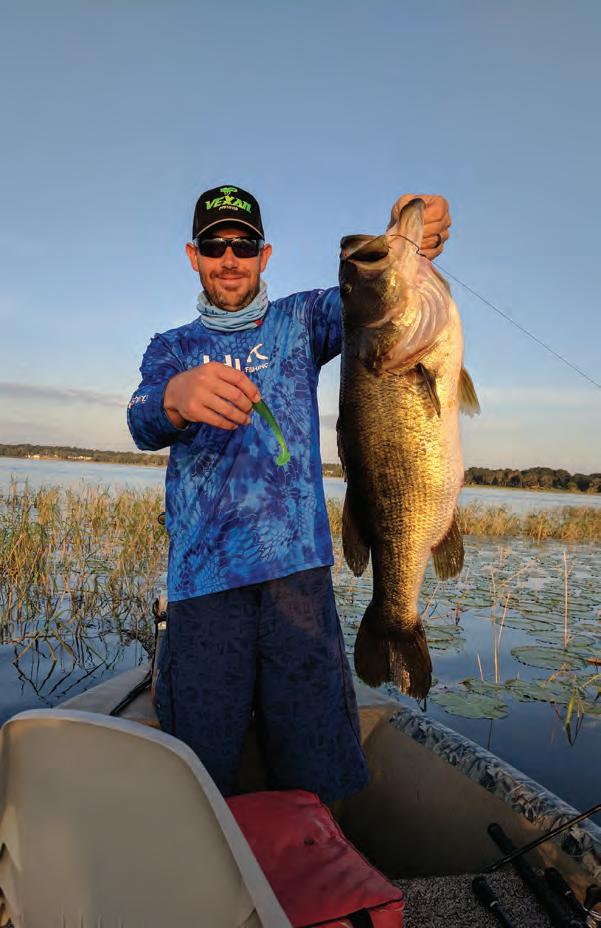
THE ORIGINAL SCENTED LURE





By Tracy Patterson

Maguire’s frst work is a compelling, fast read. His style is like a mix of Hemingway with a sardonic blend of Hunter S. Thompson. I couldn’t put it down...
Ben Martin Editor in Chief Coastal Angler Magazine “ ”

Confessions of a Fishaholic, by Thatch Maguire, is a hilarious and irreverent look at one man’s quest to catch fish in spite of life’s annoying interferences. You’ll travel with this awkward adventurer as he risks home and health to pursue his passion for fishing...regardless of the consequences. Anglers of all expertise levels will immediately identify with why his addiction is incurable. This book defines the blurred line between passion and obsession.

Tournament angler Lee Ann Powell recently set a new IGFA world record with a 10 lb. 3 oz. bass caught on 10 lb. test. She was fshing (for fun) with her friend and charter captain Dalton Smith on O.H. Ivie Lake in Texas when they noticed a school of fsh on their livescope. Powell was using a Damiki jig with a 3 inch Fluke dipped in Spike It Chartreuse Cajun Dip N Glo. According Powell, “Once the big bass took the lure the exhausting fght to bring the monster bass to within netting distance required me to constantly adjust and reset the drag with my record catch going deep each time it neared the boat.”
Afer fnally netting it, Powell says they put the fsh in the live well and headed out to fnd a set of certifed scales to weigh it. Te requirements for registering a potential world’s record fsh are stringent and Powell says she almost missed her window/timeline for submitting her catch for authentication by the IGFA.
About the IGFA: Te International Gamefsh Association is a non-pro organization committed to the conservation of gamefsh and the promotion of ethical angling practices through science, education, record keeping and recognition of outstanding accomplishments in the feld of angling.
We salute the IGFA’s decision in January 2014 to create a separate category for female anglers, opening up thousands of categories for new World’s Record opportunities.
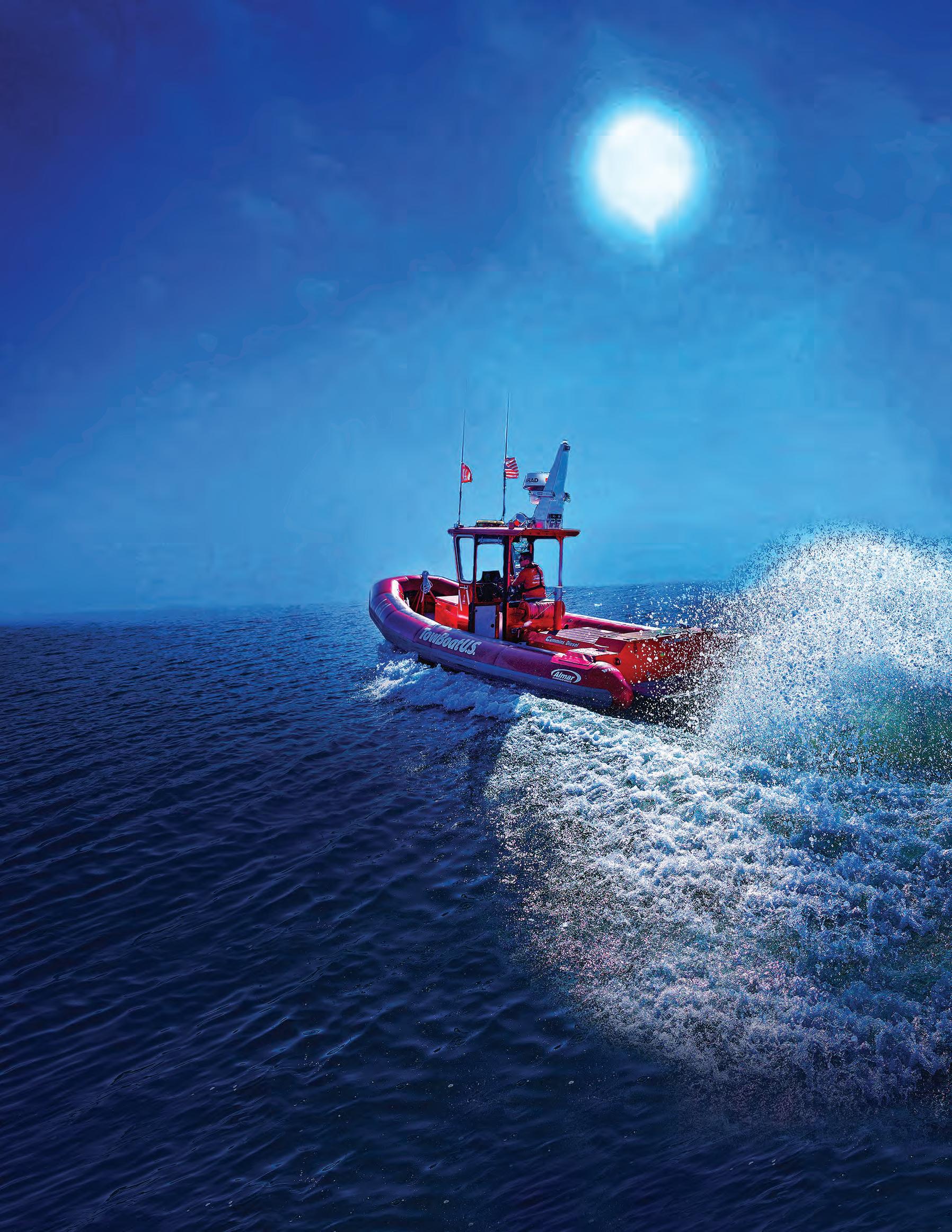
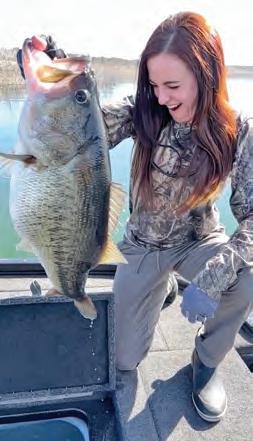





When it comes to spooling up your reels, the options are endless. For some this can be a bit overwhelming. Hopefully in this article I can help you understand what diferent kinds of lines are used for and what line strength is the best choice for you.
Te three main types of lines are monoflament, fuorocarbon and braided lines. Each has its pros and cons in diferent situations. Monoflament line foats, fuorocarbon sinks and most braided lines also foat.
I rarely use monoflament for bass fshing, but it does have its perks for a scenario or two. When throwing big heavy glide baits, I ofen spool my reels with a very strong 25- to 30-lb. monoflament, as it is very strong and much less prone to breaking on the cast when I am casting a large bait. I also ofen use mono for is a short leader when throwing a topwater bait with treble hooks. I attach about a foot of mono leader to the end of my braid, and it is less visible while also foating to keep a topwater working naturally.
Something to note about monoflament is it’s very stretchy, making it hard to drive the hook of many diferent lures into the mouth of a fsh, especially if you’re using straight mono and have a lot of line out. Te more mono you have out equals more stretch.
I use a lot of fuorocarbon in my arsenal
TYLER WOOLCOTT

of bass-fshing set ups. Tis line has virtually no stretch, it is more abrasion resistant than most other lines, and it is also a clearer line than anything else, making it harder for fsh to see. Unless I am fshing around extremely heavy cover, where braided line is needed to pull the fsh out, pretty much every reel
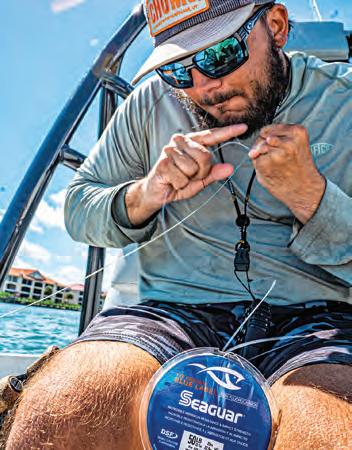


I use has fuorocarbon on it. I use anywhere from 10- to 20-lb. fuoro, depending on water clarity, types of cover, and the type of lure I am fshing. Braid also serves me well in many diferent applications. Having virtually no stretch, being very strong and extremely thin compared to other lines of the same strength, and outcasting every other line made are just a few perks of braid. Te downside of braid is it’s basically tiny thin rope, meaning if you are around clear water fsh can probably see it attached to your lure. In some cases, you will need a leader attached to the end of your braid.
Every single spinning reel I own is spooled with braid, which helps them cast better and operate much smoother than if they were spooled with the other kinds of lines. Typically, I’ll use 10lb. braid and attach a few feet of a fuorocarbon leader in a size of my choice to the end to keep it stealthy. I have 30- to 50-lb. braid on all my topwater treble hook baitcaster rods to make extremely long casts. When fshing around heavy grass and vegetation, I also use braid, typically in 50- to 65-lb. test. Tis strong line allows you to get the fsh out of the mess and into the boat. With your lure being in the grass, you can get away with using a thick braid, as the fsh won’t see your line around the vegetation.
Hopefully this helps you understand the diferent lines better and helps you put a few more fsh in the boat.
Tyler Woolcott is a professional tournament angler and guide. Check out his website at www.tylerwoolcottfshing.com.

September’s fshery in the Florida Keys can be unpredictable as we transition into autumn at the end of the month. Cooler northern waters will begin to push fsh back into their southern migration, while we maintain our usual summer species.
It’s always a sweeter deal running ofshore when the mahi are still around, giving more opportunities to diversify the fsh box. Tey will begin to phase out throughout the next several weeks, making this month the last month of the year to reliably target them.
Swordfsh and blackfn tuna are also excellent fuel-burn justifcations this month. With fewer boats on the water, the trafc at the Marathon humps will be less chaotic for targeting tuna.
Te reef fshing is always a good option. Te snappers are snapping year-round and seasonal harvest for black and red grouper are still open.
Tis is a great opportunity to dive for lobster as well, as the water will still be warm, but the excitement over opening season has died down. Te beginning of lobster season can turn our waters into an absolute zoo. It’s unnerving to even

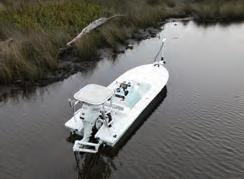
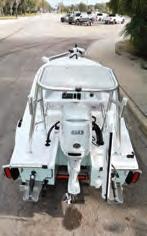
By Capt. Quinlyn Haddon
suggest going out during that time and throwing yourself in the mix of that mayhem. Tat hype seems to gravitate mostly towards the mini season in July and the few weeks in August.

Each year when the kids are back in school, the Florida Keys takes a massive hit on tourism. We will experience the slowest time of the year over the next few months.
Although this may be a difcult time for working locals, it’s something to be enjoyed by our visitors. Te prices of accommodations will be as low as they get, restaurants will have ample seating, service will be quick, and best of all, no trafc!
Te furry of summer boaters trailering their rigs down from all over the country will have stopped, making both road and water trafc much more pleasant. Te fshery will experience less pressure, creating a mecca of hungry fsh, for those who are able to get out there.
Being in the middle of hurricane season likely
However, it’s a great time to make an impromptu trip, knowing you won’t have a problem fnding cheaper accommodations and availability for fshing charters.
Hurricane season may seem daunting, but there is more than enough notice ahead of any major storm. Locals are always diligently watching the weather for the frst sign of any potential disturbance and will be able to help you make decisions when booking last minute trips.
While September maybe be our slow season for tourism, that does not apply to our fshery. Come take advantage of having paradise all to yourself.
Capt. Quinlyn Haddon guides with Sweet E’Nuf Charters based out of Marathon, Florida Keys. www.captainquinlyn.com; IG: @captainquinlyn

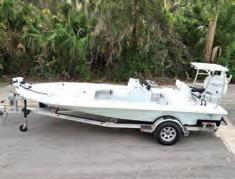


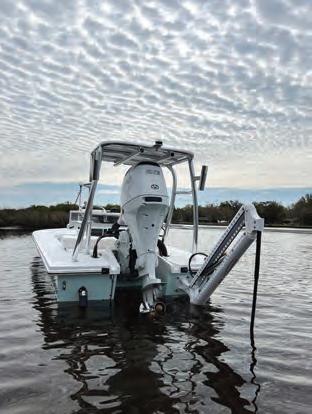

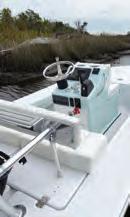

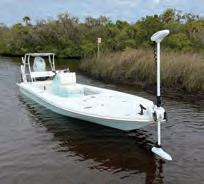
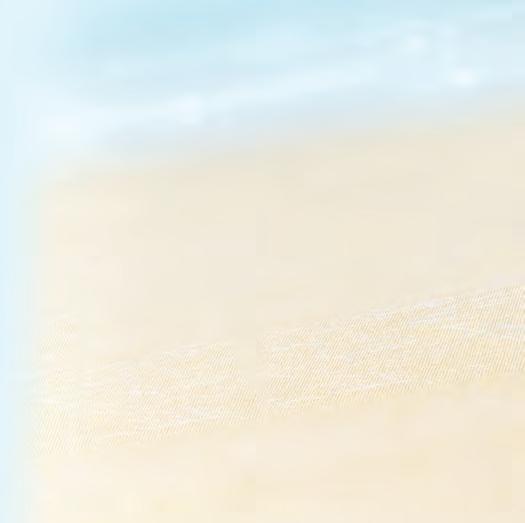




Amemorable
beach moment: You’re basking in the warm sun, toes in the sand, letting the gentle turn of the foam-capped waves lull you into a state of complete relaxation. As your eyes scan the endless horizon of blue on blue, you’re rewarded with a school of dolphins making their way across the sea.
There’s no denying their signature shape as they leap from the water. If you don’t see anything else extraordinary the rest of day, you can take solace knowing you’ve witnessed one of nature’s most playful and human-like creatures in their natural habitat.

Why not re-create that special moment with our Balinese Dolphin Pendant? We’ve captured two dolphins mid-jump in sterling silver crafted in the Balinese style. Tucked between these beloved sea mammals is a full carat of shimmering blue topaz. Made by some of Indonesia’s finest artisans, this pendant is an absolute steal at JUST $29! That’s what we call our Stauer IMPOSSIBLE PRICE!
Nothing captures the shimmering color of the ocean in the midday sun like blue topaz. With its sparkling, clear blue color and high reflective index, blue topaz is one of the world’s top-selling gemstones. The Gemological Institute of America lauds topaz for its hardness, noting that blue topaz is known for its intense color that’s better than aquamarine. With this special price, you can score quite the catch.


Satisfaction guaranteed or your money back. Enjoy the Balinese Dolphin Pendant for 30 days. If it doesn’t pass the test swimmingly, send it back for a full refund of the item price.
Limited reserves. This pendant is already one of our best sellers this year. A full carat of genuine blue topaz set in .925 sterling silver for this price is as rare as a dolphin sighting. We cannot guarantee availability for long. Call today! This offer is limited to the first 1,900 responders to this ad!
Jewelry Specifications:
• Made in Indonesia
• Blue topaz and .925 sterling silver
Balinese Dolphin Pendant (1 carat)

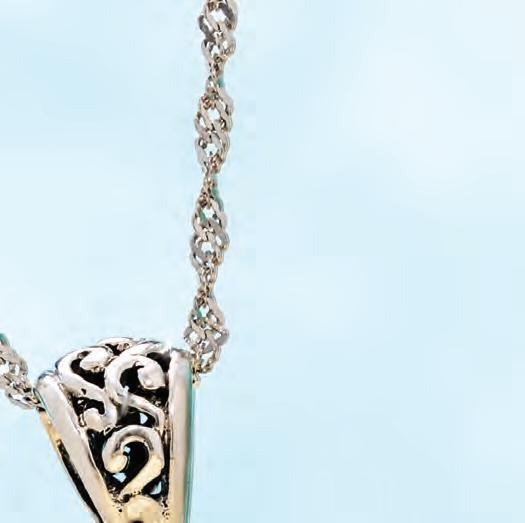
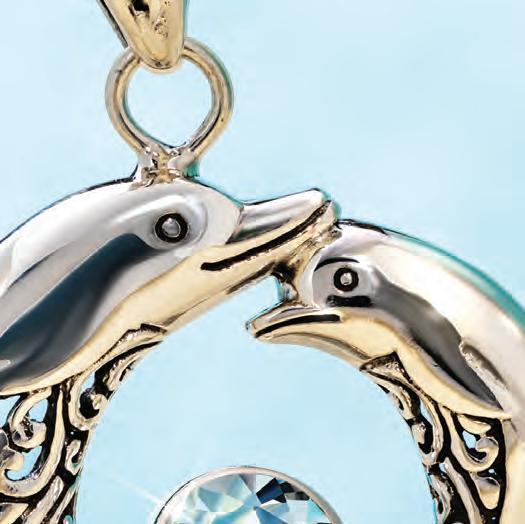

$299 $29* Save $270
*Special price only for customers using the offer code.


Chain sold separately.
One carat of shimmering blue topaz set in sterling silver for ONLY $29

What Stauer Clients Are Saying About Our Topaz
“Just lovely! Would recommend it as a purchase. Thank you STAUER.” — Mary L.




An angler trolling for striped bass hauled in a 127-pound, 6-ounce Arkansas state record paddlefsh on June 15. Te monster fsh came from Beaver Lake in northwest Arkansas, and it crushed the existing record of 118 pounds.
Mike Schleeper inked his name in the record books while trolling brooder minnows, which are large shiners, about 30 feet deep near a point on the 28,000-acre lake. His friend and fshing buddy Tom Mayberry was there to help during the 45-minute fght.
“I’ve been fshing for stripers up here for about 13 years, and I’ve had the chance to catch some stripers over 30 pounds, but this was diferent,” Schleeper said. “It didn’t strip line and stop in surges like big stripers do, he just sort of pulled the rod down and kept going. I couldn’t turn him, so we had to follow him with the trolling motor for about the frst 20 minutes.”
Once Schleeper did manage to sway the fsh in his direction, the fght continued for nearly another half-hour.
“It was a 45-minute fght altogether,” Schleeper said. “I’d thought maybe it was a really big striper, but then we could fnally see it a little bit. It looked like a giant catfsh at frst, but as we got it closer to the boat we realized what it was.”
Te giant paddlefsh had been hooked in one of its pectoral fns incidentally while the anglers were trolling. Snagged fsh ofen don’t count toward state records in many states, but paddlefsh are accepted because these fsh do not bite lures—they eat plankton—and catches on rod-and-reel are almost exclusively the result of snags.
When Schleeper and Mayberry fnally got the fsh to the side of the boat, they ran into a snag of their own.
“Our net wasn’t big enough for the fsh,” Schleeper said. “Tom wrestled with that fsh for a while trying to fgure out a way to get it in the boat. At one point I told him to just cut the line because it wasn’t worth it. Tom was adamant that we needed to get that fsh in and report it.”
Schleeper agreed with Mayberry and they fnally worked a rope through the fsh’s mouth to hoist it aboard.
“As soon as the fsh fell to the bottom of the boat, the hook popped free,”


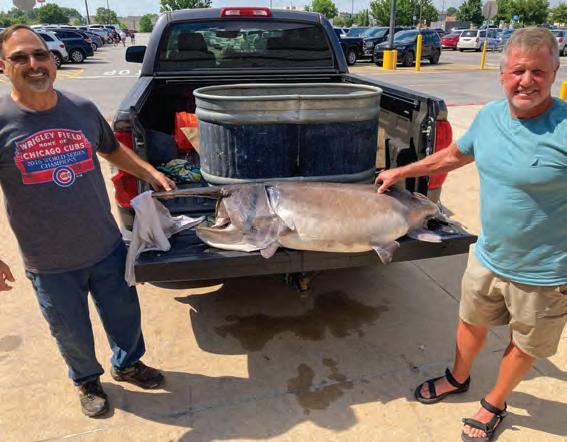
Schleeper said. “We got really lucky.”
Paddlefsh are the oldest surviving animal species in North America according to fossil records. In fact, paddlefsh predate some dinosaurs (300 million years). Females may spawn only once every 4 to 7 years.
A recent regulation passed by the AGFC allows a limited, permit-based snagging season for paddlefsh in the White River portion of Beaver Lake from the Twin Bridges Access to the Lake Sequoyah Dam April 15-June 15.
Te world-record paddlefsh weighed 164 pounds, 13 ounces. It was caught by Chad Williams at Missouri’s Lake of the Ozarks in March.
For more giant fsh, go to coastalanglermag.com.

